Laos, tiny and mysterious country in South-East Asia, is just starting to welcome tourists and can offer an authentic travel experience. During our three-month trip to South-East Asia, we spent 20 days in this country, after having visited the more touristic neighbouring Thailand. In this travel itinerary, we are going to show you what to do and what to visit during a trip to Laos: we have decided to skip some pretty famous destinations, such as Vang Vieng or the capital Vientiane, because buses in Laos take forever and we wanted to spend some time in the North.
If you are travelling to Laos, check out our useful tips to travel to Laos.
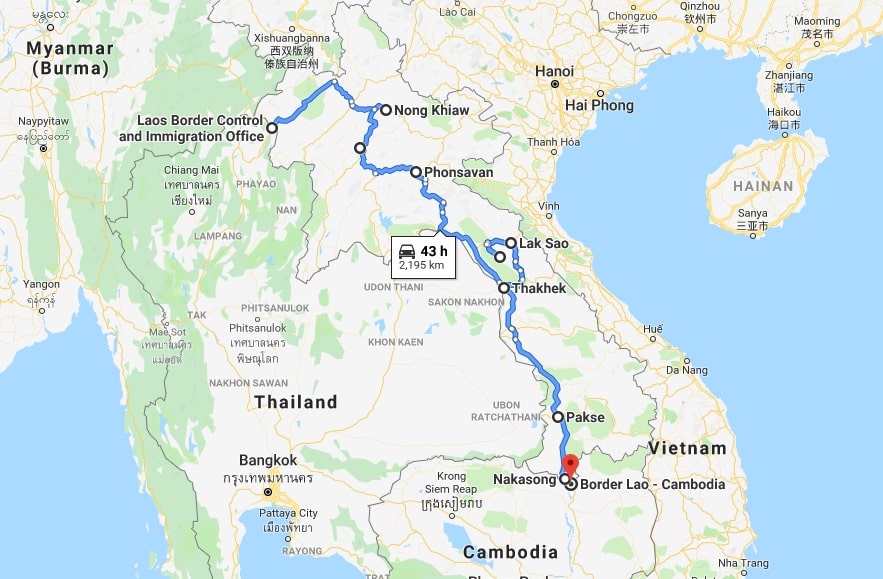
| DISTANCE | TRAVEL TIME |
|---|---|
| Thailand-Muang Xai | 6-7 hours |
| Muang Xai-Nong Khiaw | 3 hours |
| Nong Khiaw-Luang Prabang | 3 hours |
| Luang Prabang-Phonsavan | 7 hours |
| Phonsavan-Thakhek | 10:30 hours |
| Thakhek-Pakse | 7 hours |
| Pakse-Don Det | 2:30 hours + 10 min |
| Don Det- border with Cambodia | 10 min + 15 min |
Table of Contents
Day 1: Arrival in Laos, Muang Xai
After having crossed the border with Thailand, the majority of tourists take previously booked buses or ferries to reach Luang Prabang, one of the big cities of Laos. We, however, didn’t want to miss the chance to visit a bit of the North, so we took a shared tuk-tuk towards the nearest bus station (probably Pak Lay). We wanted to at least get closer to Nong Khiaw, nice little city known for its landscapes. We got on a VIP bus which took us to Muang Xai, also called Udonxai, which is located roughly 2-3 hours to our final destination. The bus had bunk beds instead of seats. At the beginning we thought it was funny and we took a lot of pictures, but the wonderful road along the national park of Nam Ha was very winding and spending 8 hours lying on a hard mattress, almost falling down at every curve, was not extremely comfortable.
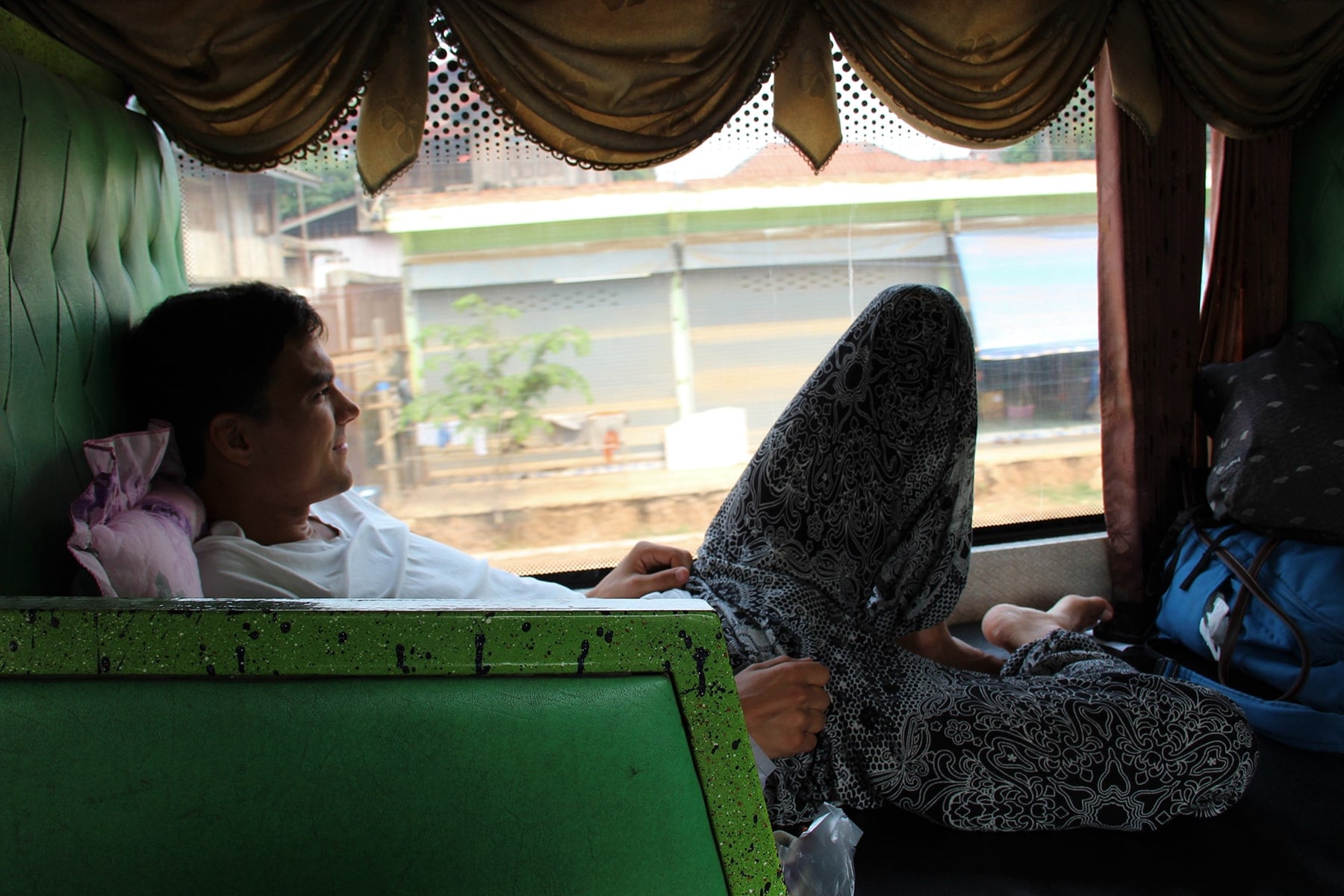
We got to Muang Xai around 6 o’clock p.m. Since our very first day in Laos, we discovered that Laotians have a passion for karaoke that must be sung at the top of their lungs with microphones with a distorted sound.
Ticket price bus Pak Lay-Muang Xai: 120,000 kips (12.4€); journey time Pak Lay-Muang Xai: 8 hours.
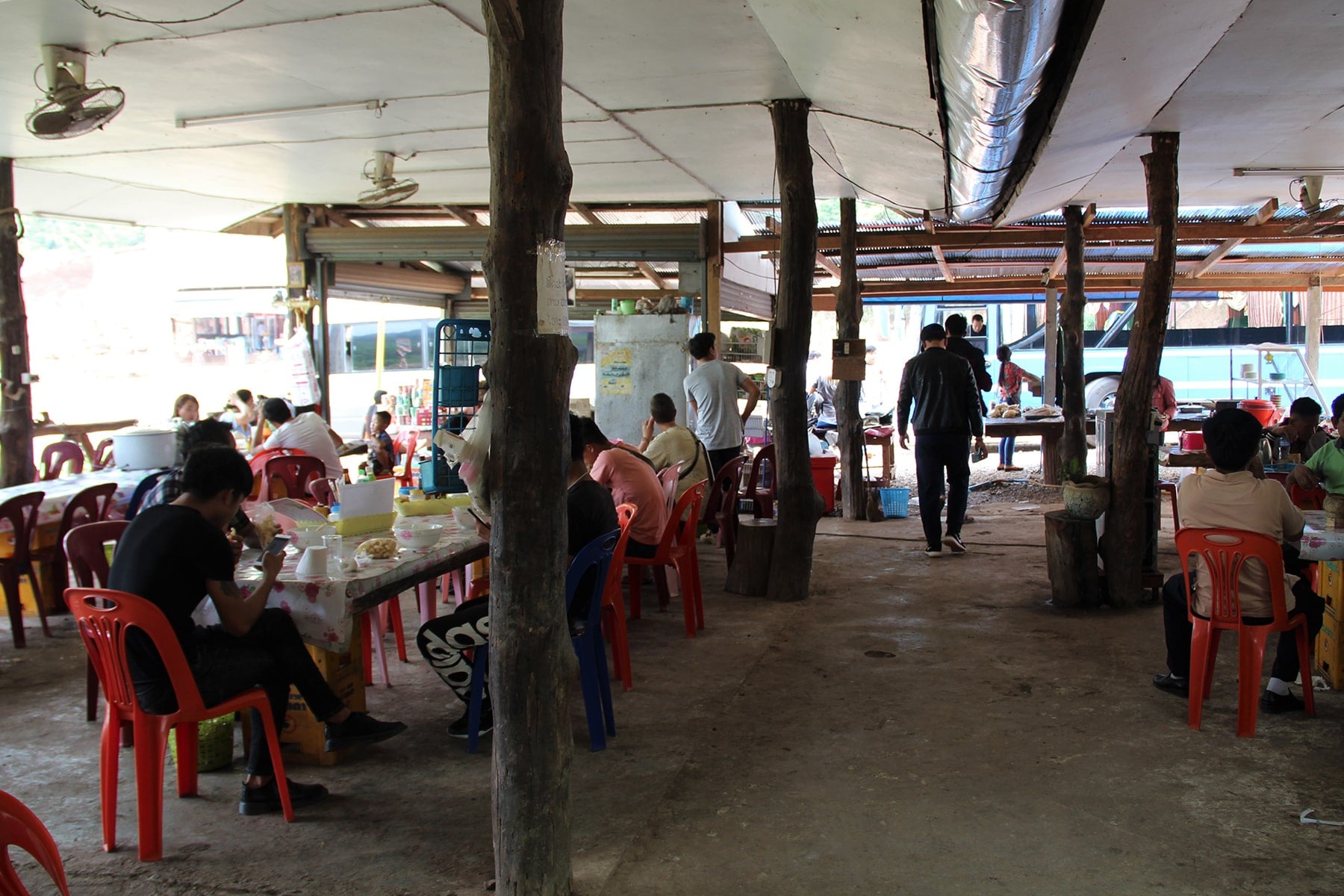
Days 2-5: Nong Khiaw & home stay
The minivan going to Nong Khiaw had 12 places, 15 people squeezed in, and it travelled along little mountain roads. We quickly realised that Laotians experience a pretty severe case of travel sickness and one passenger after another started to get sick during the trip. It was a rather odd experience, but after a while we started getting used to it, something we thought we would never say!

We finally reached Nong Khiaw, a tiny dusty village divided by a very high bridge on the river. On the other side of the bridge, many little hotels overlook the river, surrounded by wonderful green mountains.
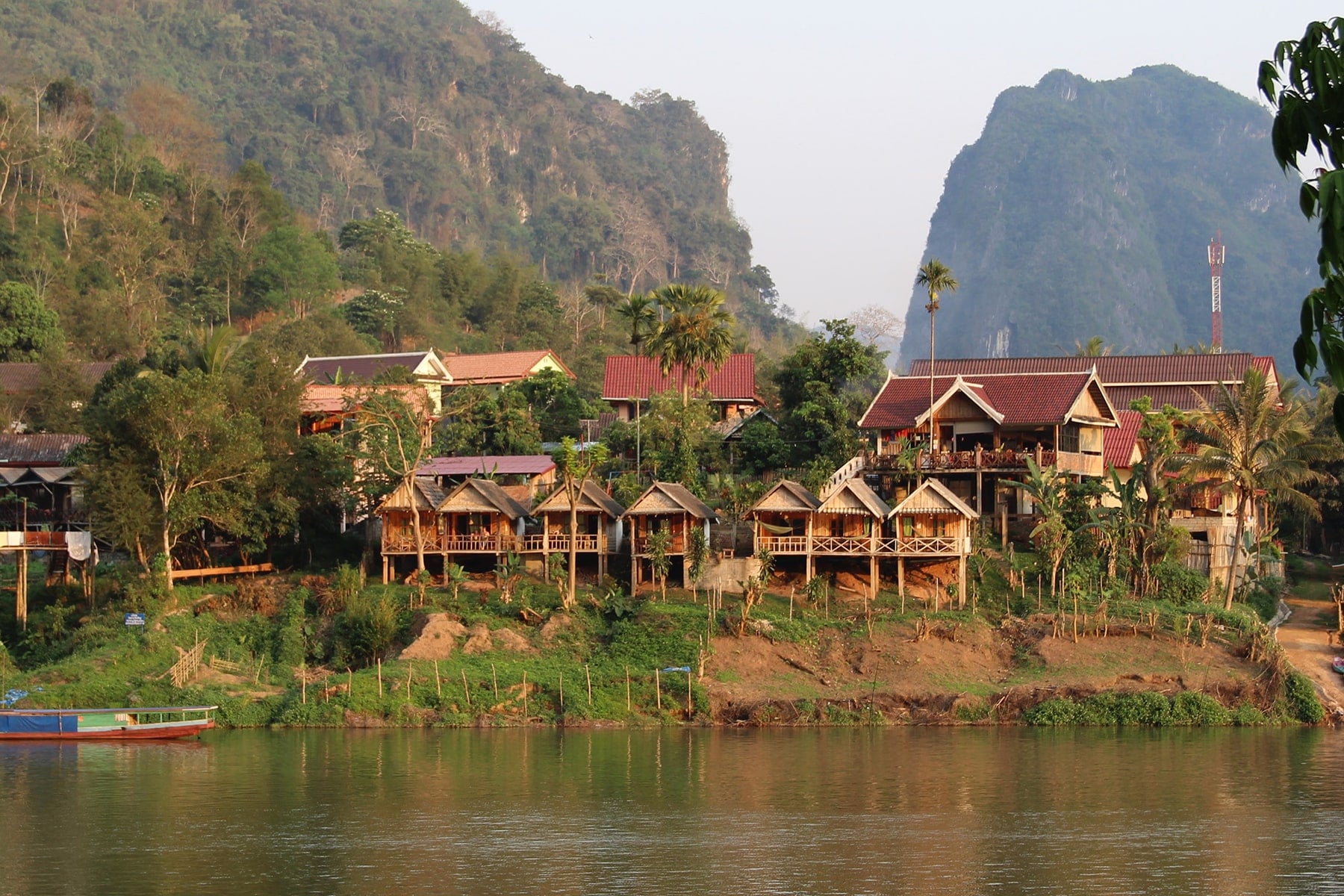
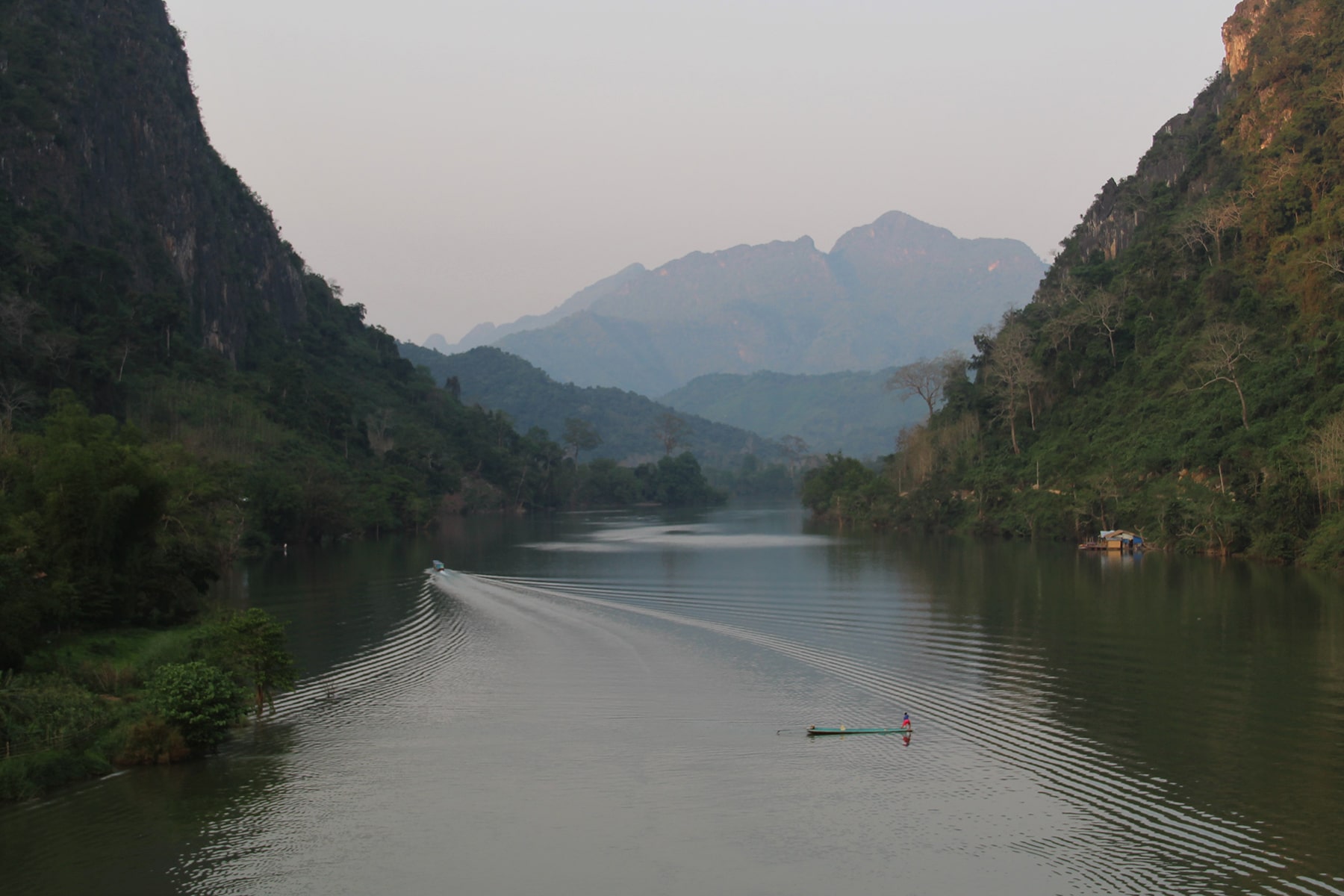
The little village of Nong Khiaw offers many activities for tourists, such as kayak or trekking to the ‘viewing point’, which sadly we didn’t have time to do. We decided to go check out the Tiger Trail Agency, recommended by our guide because it respects the environment and local population. We booked with other people a home stay, a night in a local village, as well as the famous trekking called ‘100 waterfalls’. The following day we got on a long blue boat that brought us to the village, where we were going to spend the night. The villages located on the river bank can be reached more easily by boat than by bus, because the road connecting them to Nong Khiaw must get through the mountains.
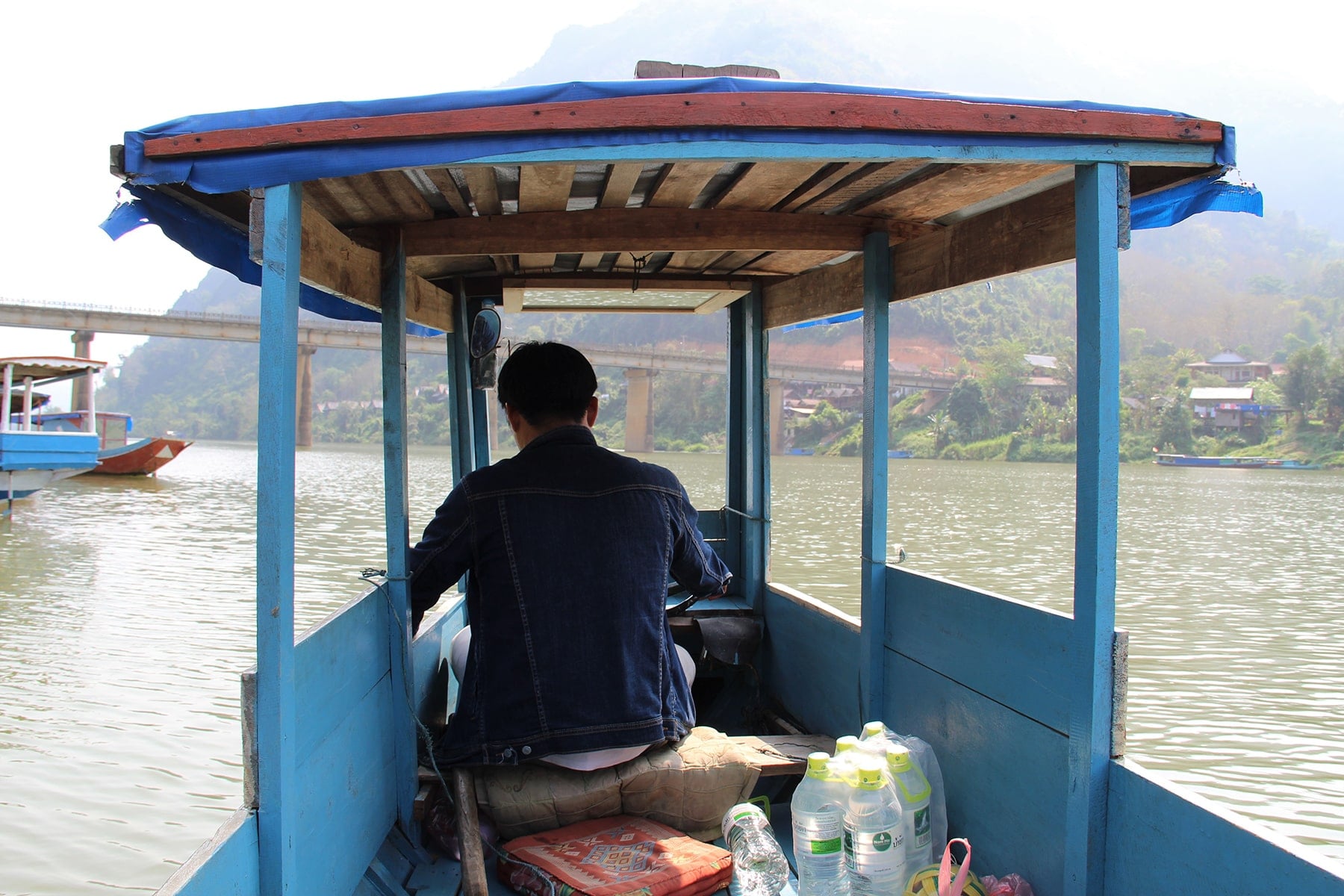
The village included a shop owned by the head of the village family, a field with a net, a meeting room and many bamboo and brick houses scattered around dusty roads.
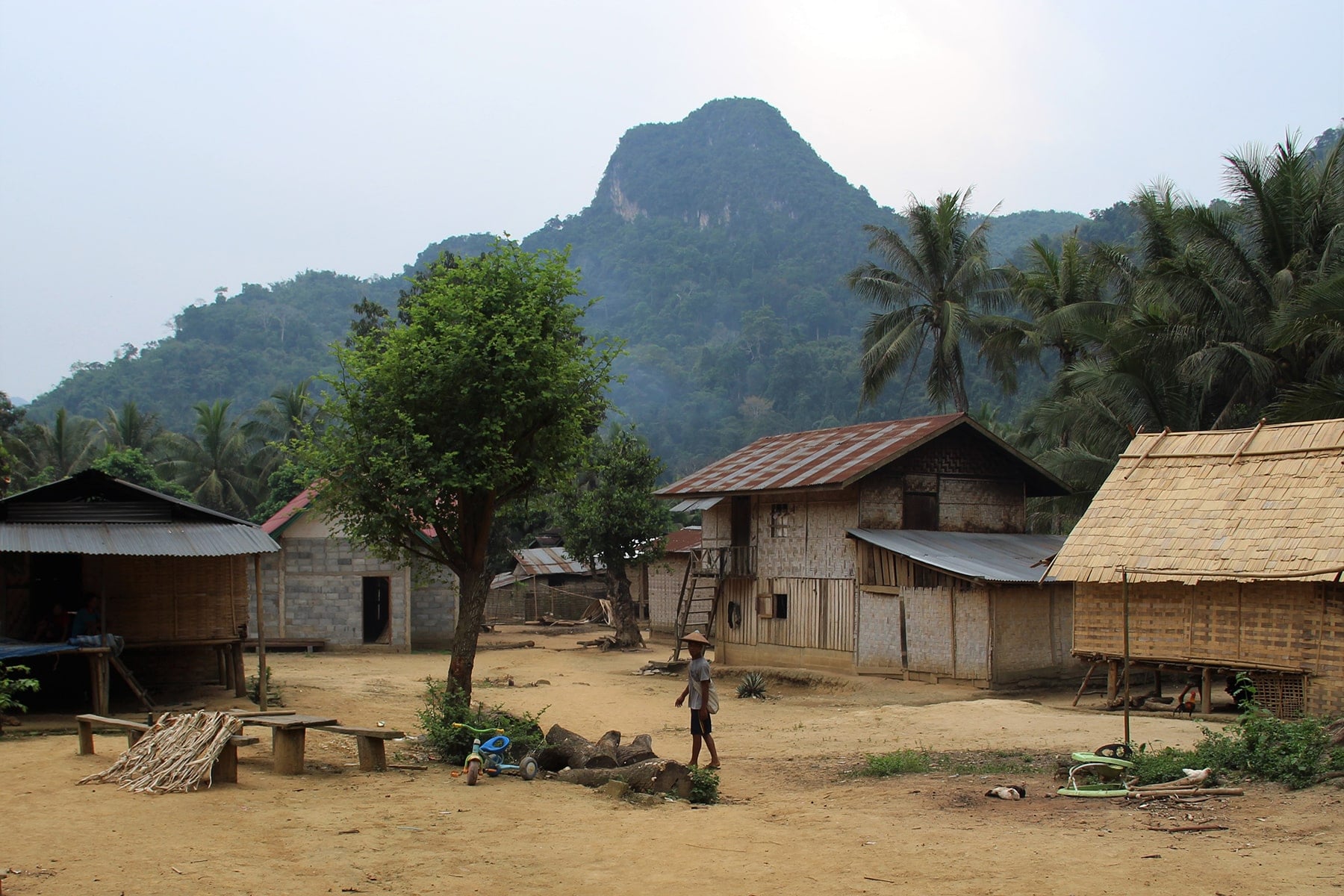
Once we organised our stuff, a local guy guided us on the trekking. We went through some fields that the head of the village wanted to turn into paddy fields and then we started to see the bottom of the waterfalls that we had to climb to get to the top of the mountain. At the beginning we tried to avoid wetting our feet, but we quickly realised that it was to no use. The waterfalls became steeper and steeper and in the most difficult spots, we could put our feet into holes or hold onto ropes that had been built for the occasion. We reached the top pretty quickly and we took a refreshing shower in a beautiful waterfall.
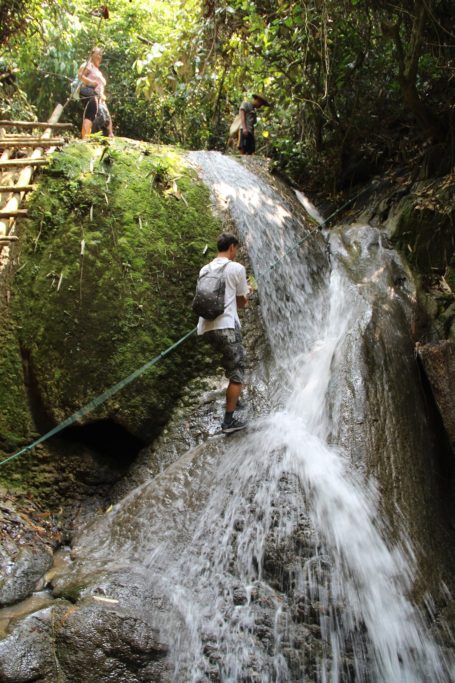

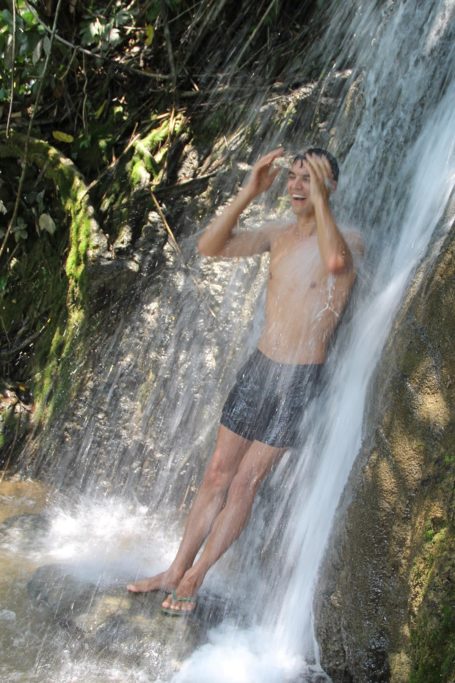
After lunch, we came back to the village and a man brought us on his boat to go fishing. Their fishing technique consisted in putting a net, full of holes, in a semi-circle and then hitting the water with a huge bamboo stick to frighten fish and trap it in the net.

Since our fishing activity wasn’t very fruitful, our guide brought to a close-by village where people were singing karaoke and partying. People of this village, unlike the people of the village where we were staying, weren’t used to seeing foreign people. Kids followed us amused, little children stared at us with a frightened glare, women were waving at us and men, a bit (or very) drunk after the party, invited us to join them eating rice with buffalo meat, accompanied by warm beer and Laolao, homemade rice alcohol.
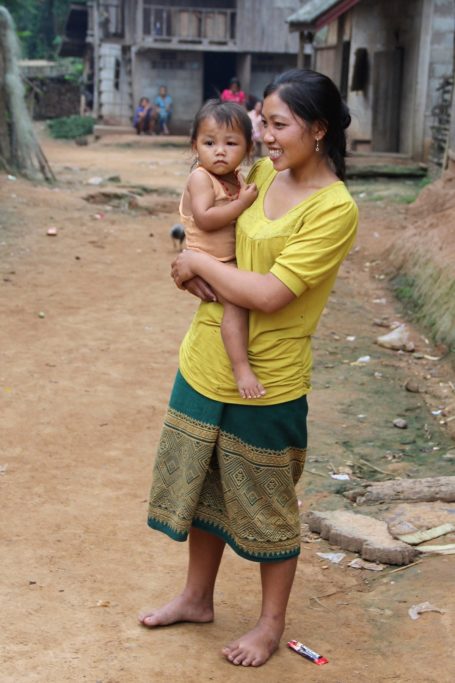
The following morning, supported by the village people cheering them on from the bank, man and boys trained for a boat competition between villages, which was to take place the following week.

In the morning, we walked in the middle of the jungle to a cave hidden between the trees. People used to live in this cave that shielded them from bombs during the two Indochina wars, as traces of houses in the cave still show. Long tunnels go on for km, but not all of them can be visited.
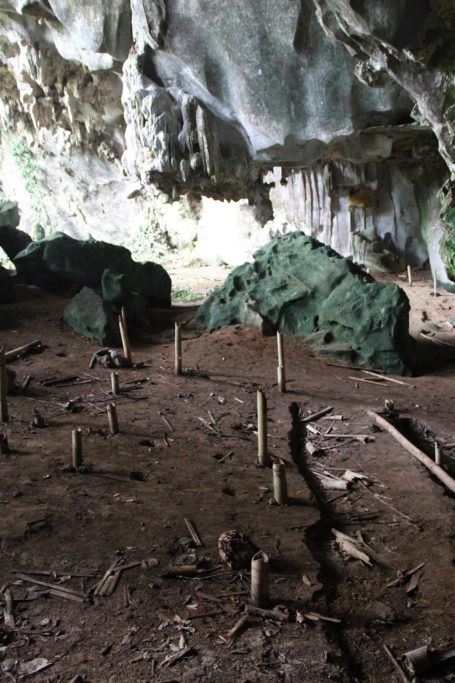
Our home stay in the river village came to an end and we went back to Nong Khiaw, where we relaxed for a day with a nice energetic massage and a lot of stretching. We recommend doing this kind of experience, even if the price may seem a deterrent (compared to the prices applied in the country), but we recommend carefully choosing the agencies organising these home stays. Always choose agencies that respect village inhabitants as well as the environment; a good way to getting to know some of these agencies is looking them up on your guidebook or on the internet. Don’t choose an agency if you don’t have any information about it.
Ticket price bus Pakmong - Nong Khiaw: 30,000 kip (3.10€); journey time Pakmong - Nong Khiaw: roughly 45 min.
Trekking & home stay one night with Tiger Trail agency: 450,000 kip (46.6€).
Days 6-7: Luang Prabang
We took a little bus early in the morning to reach Luang Prabang, the only big city in Laos that we were going to visit. Luang Prabang today clearly reflects its ancient past as French colony, from the architecture to the cuisine. After a month-long trip in Thailand, our body absolutely needed some bread, so we went to a French bakery, where we voraciously ate a sandwich with an exorbitant price, as if it were the most refined cuisine in the world.

Luang Prabang has plenty of colourful temples; we visited Wat Xieng Thong, made of little chapels decorated with magnificent golden motives and majestic black and red columns.
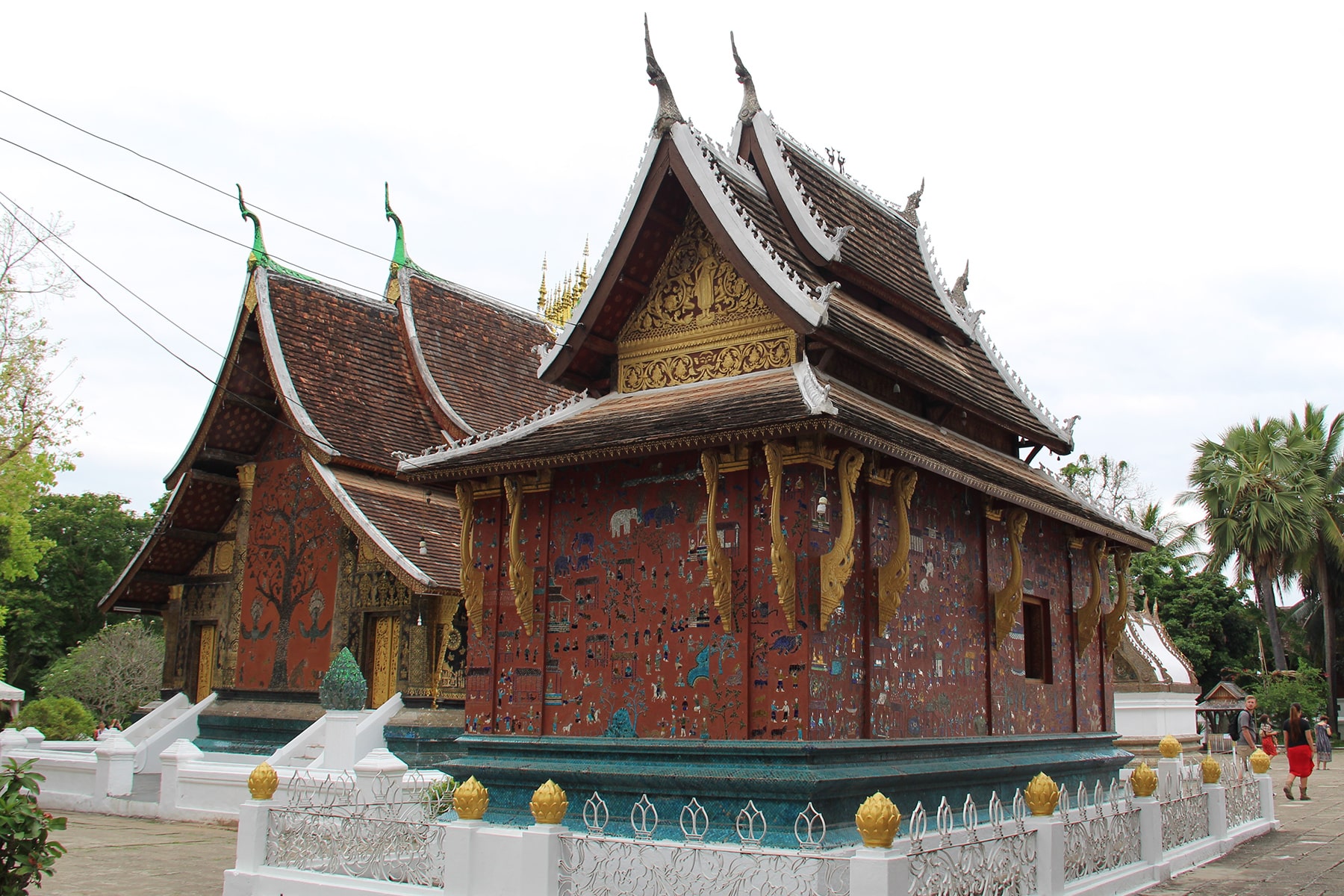
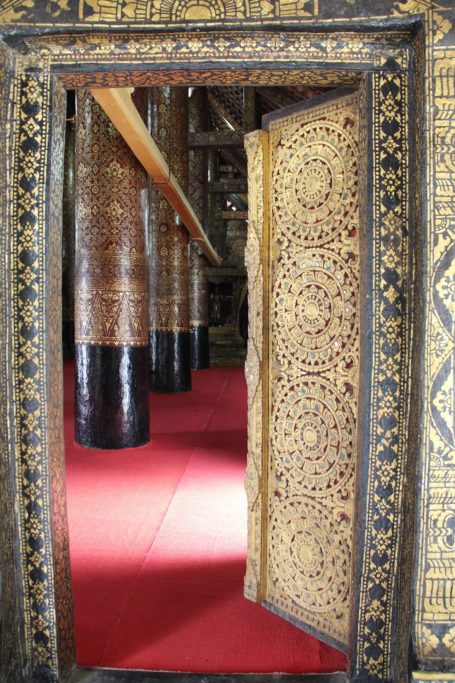
We then climbed up to Wat Tham Phou Si, a temple dominating the city from a little hill that, illuminated in the evening fog, seems to hover over the city at night. We also stopped to visit Wat Mai Suwannaphumaham, an astonishing red temple on the city main street with beautiful golden decorations.
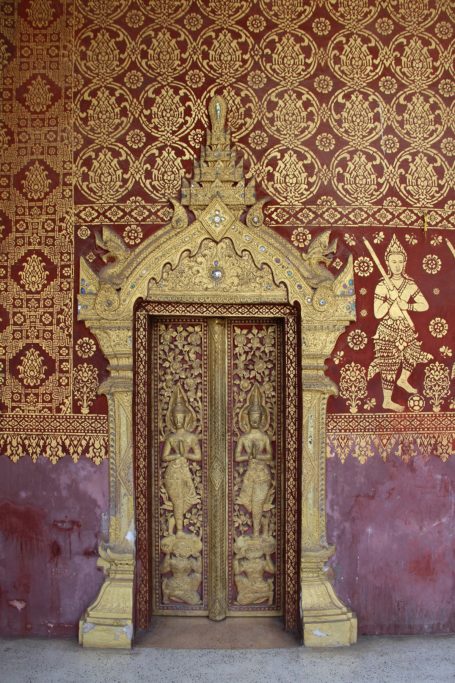
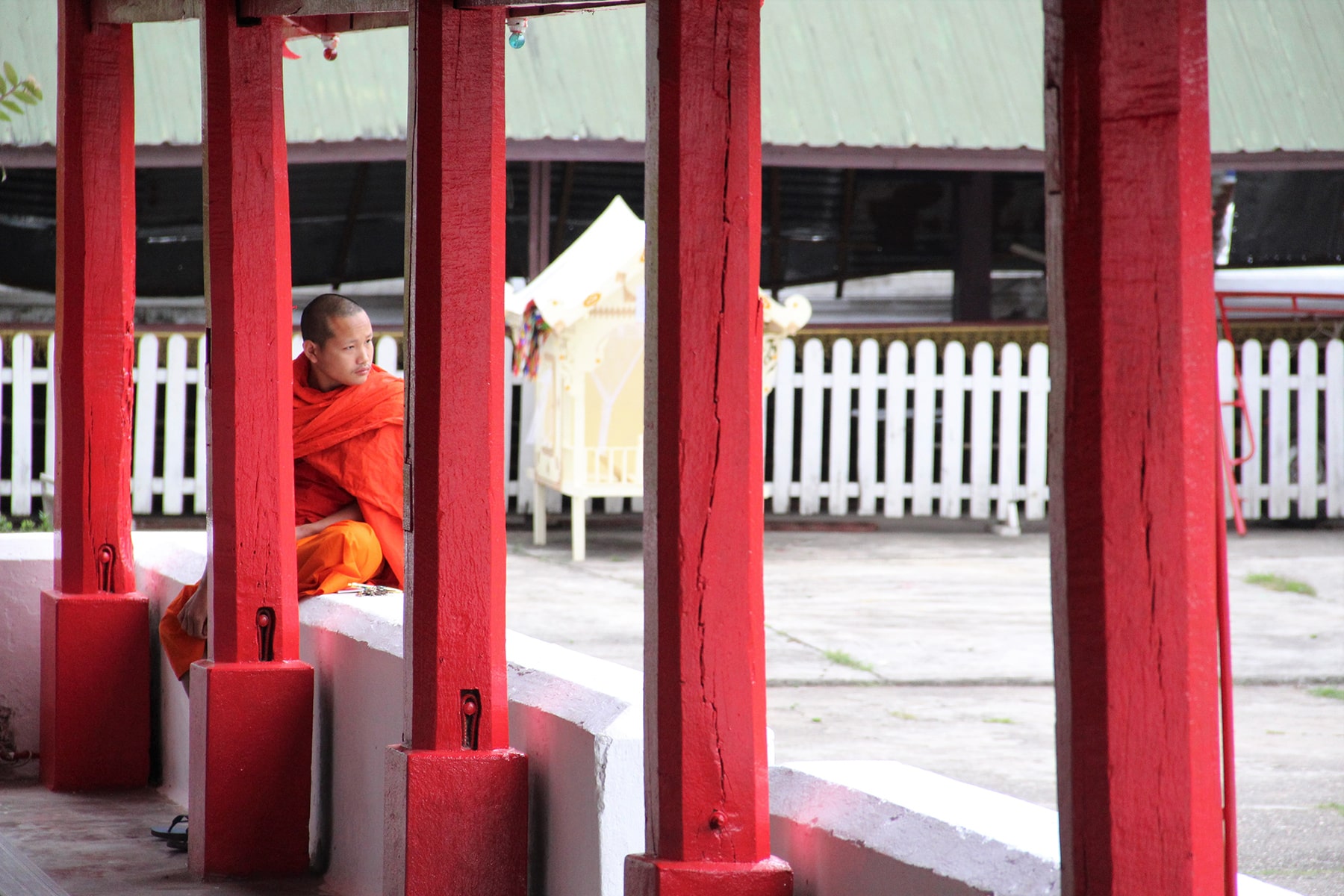
We also saw, only from the outside, the Royal Palace and the tiny temple enshrining a little Buddha statue called Prabang, which gave the city its name.
We finally visited the UXO information centre, raising awareness on the subject of bombs thrown in Laos during the Vietnam war, which are still unexploded. In the Eastern part of the country, undetonated bombs are still causing many deaths and mutilation, although an effort to research and clean the territory has been implemented.
At the crack of dawn in Luang Prabang you can witness the morning alms ritual of the monks. Worshippers sit down along the city roads and the monks pass by in a queue to gather food and beverages, which are then shared with poor people. It is sad to see that this ritual has become very touristic and, although every temple displays information panels about how to behave, written in every language, disrespectful tourists still don’t keep a respectable distance with monks, chat loudly and take pictures far too close to them.
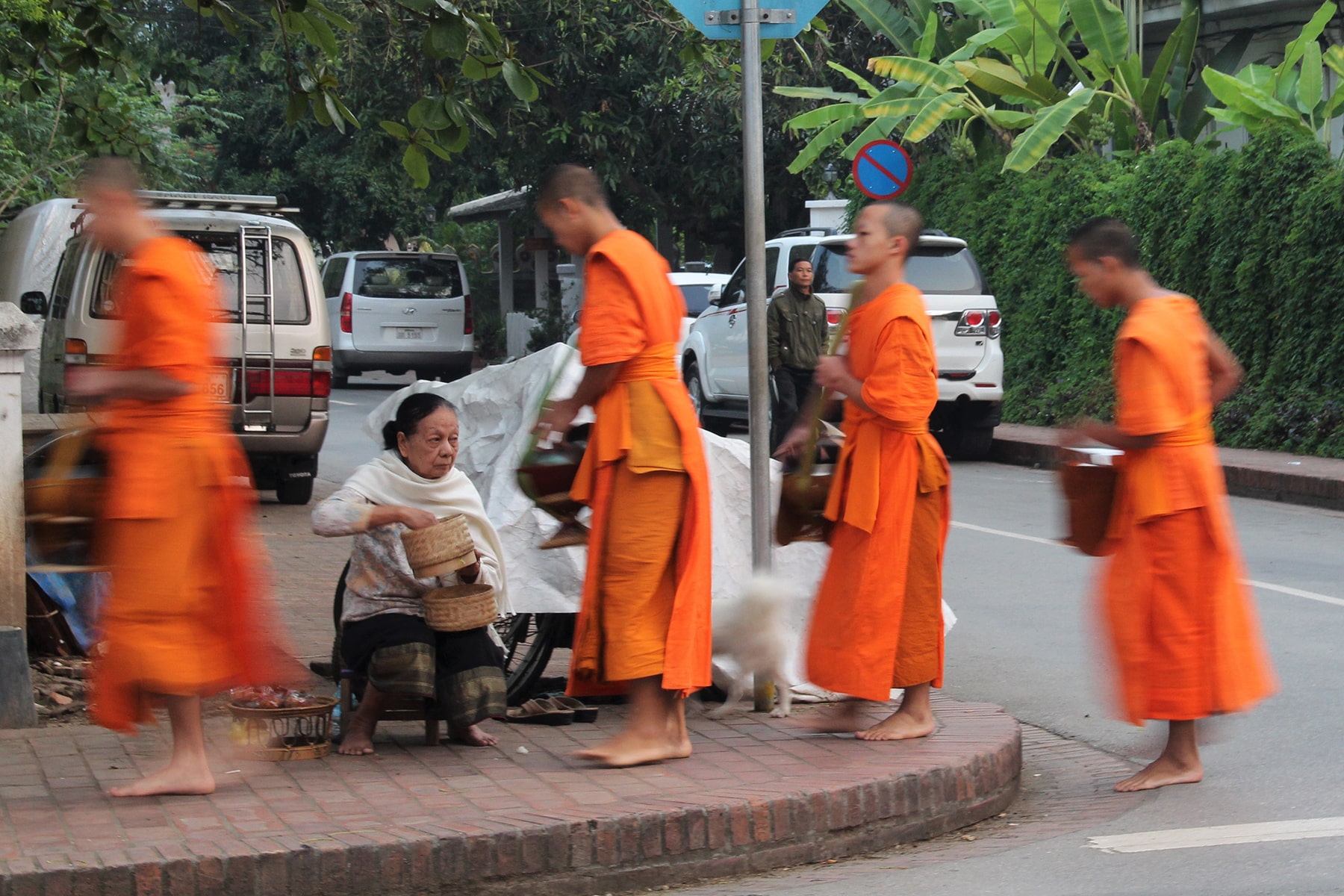
Finally, in the city centre of Luang Prabang there is a small night market which is ideal to try out many Laos food specialties.
Price tuk-tuk Northern station Luang-Prabang - city centre: 20,000 (2€).
Day 8: Kuang Si Waterfalls
We reached in under an hour Kuang Si waterfalls by a beautiful blue scooter that we rented at the hotel. Kuang Si includes the waterfalls area and a bear rescue centre, where we started off our visit. The centre works to save bears captured to extract their bile, that are now hosted in the centre in big areas equipped with slides, hammocks and climbing structures.
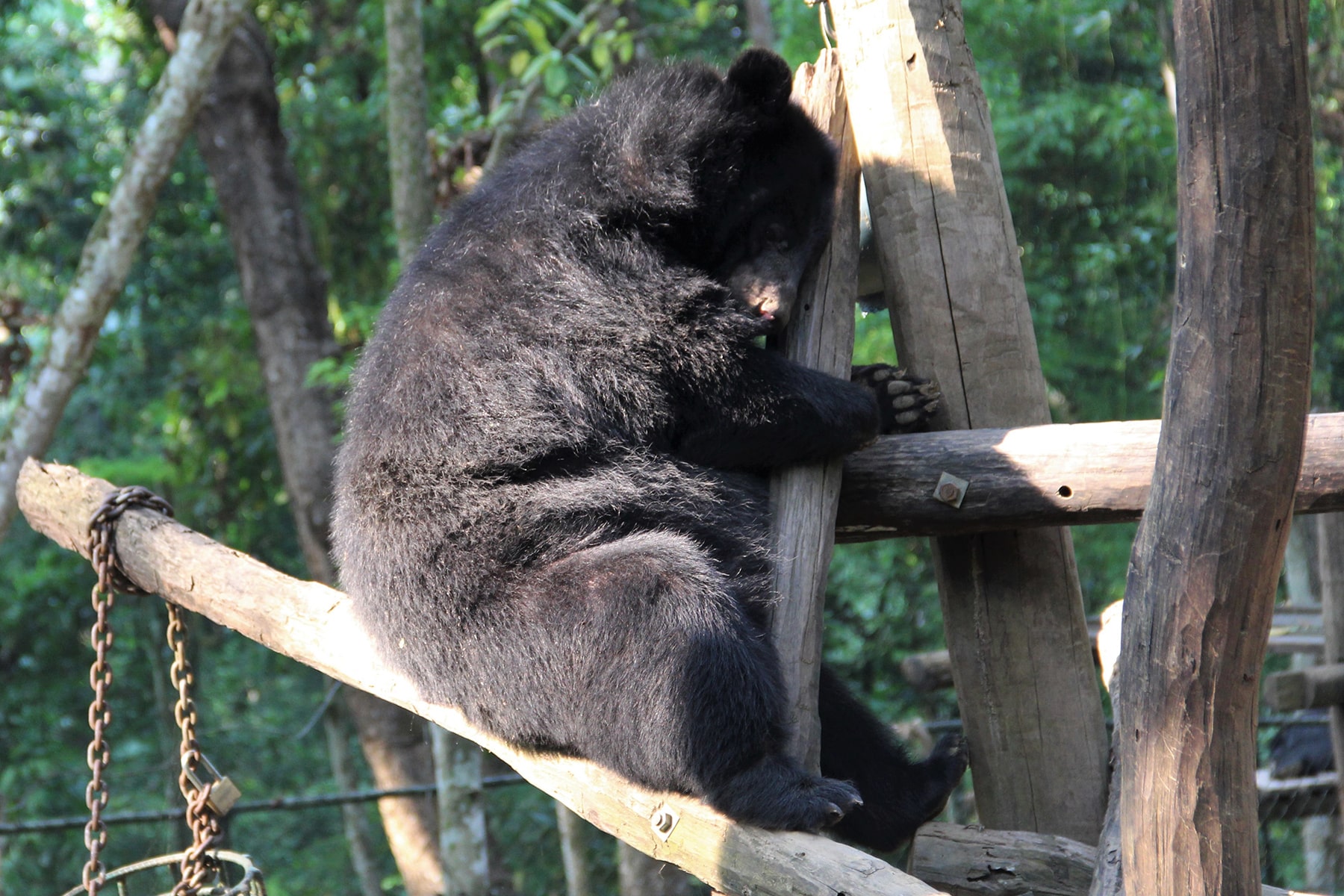
We then went on to explore the waterfall areas: little waterfalls form many pools with transparent water sliding down the hill. You can swim in the natural pools: the water is absolutely freezing, but after the first moment of shock, it’s very pleasant. We followed backwards the flow of the waterfalls, until we reached the beautiful main waterfall of the park.
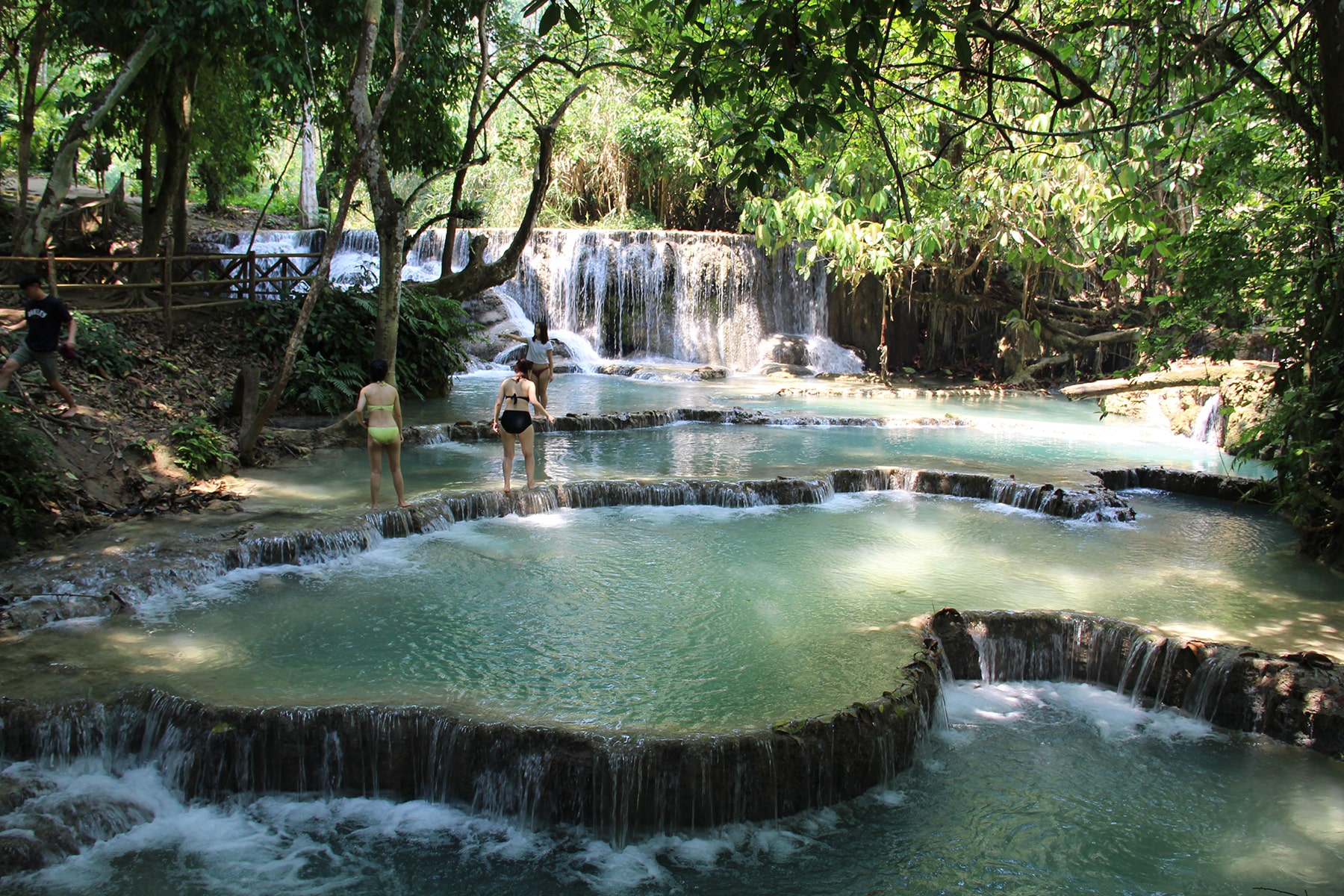


Next to the main waterfalls, a little hidden path goes uphill and reaches the top of the waterfall. Tiny wooden bridges and stairs had been built to facilitate the short trek, which started on the left side of the waterfalls to then get back down on the right side. Huge trees with majestic intertwined roots are scattered everywhere around the park, equipped with a label with the name of their species on it.

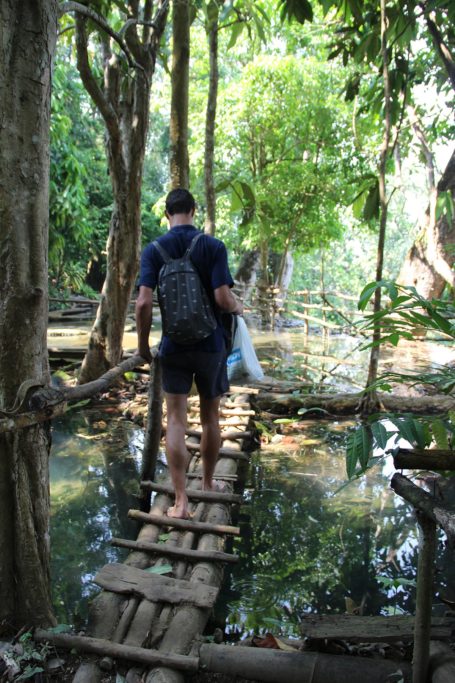
Sadly we didn’t have enough time to visit Pak Ou Caves, so we took an ice-cream made with buffalo milk and came back to Luang Prabang.
Parking Kuang Si: 2,000 kip (0.20€) (the owners of the shop in front of the parking area will ask you to pay to leave your scooter in front of their shops).
Price ticket entry to Kuang Si waterfalls park: 20,000 kip (2.1€); Kuang Si waterfalls park visit duration: 4-5 hours (depending on how long you stay in the water!).
Days 9-10: Leaving for Phonsavan and Jar Site
Due to miscommunication, we missed the bus for which we had booked our tickets and we had to buy other tickets to get on a minivan, which wandering on winding mountains roads, reached Phonsavan in 7 hours. Phonsavan is a dusty city made of a main road with some shops and a bus station that also served as market: garlic, onions, fish squeezed in buckets full of water were sold there and seamstresses were sawing in minuscule shops. Many American people live here and work for the MAG (Mine Advisory Group) to dismantle bombs still present on the territory. We visited their centre to see what they do to clean the area from the so-called UXO, unexploded ordnance. We originally decided to go all the way to Phonsavan to visit the Jar Sites, mystical areas similar to the Neolithic sites, full of stone jars. According to a theory explained in the museum next to the Jar Site 1, these jars could have been used as burial in 500 B.C. Many sites can be visited: we went to site number 1 - the most famous one and the one closest to the city, to number 2 and number 3, by a run-down scooter that we had rented in town. The most beautiful site is undoubtedly site no 2, where jars are located in a pine tree forest and with time nature has taken over these mystical objects. The site number 1 is the one we liked the least, but the museum is interesting and helps understand why - they think - this mysterious place existed.
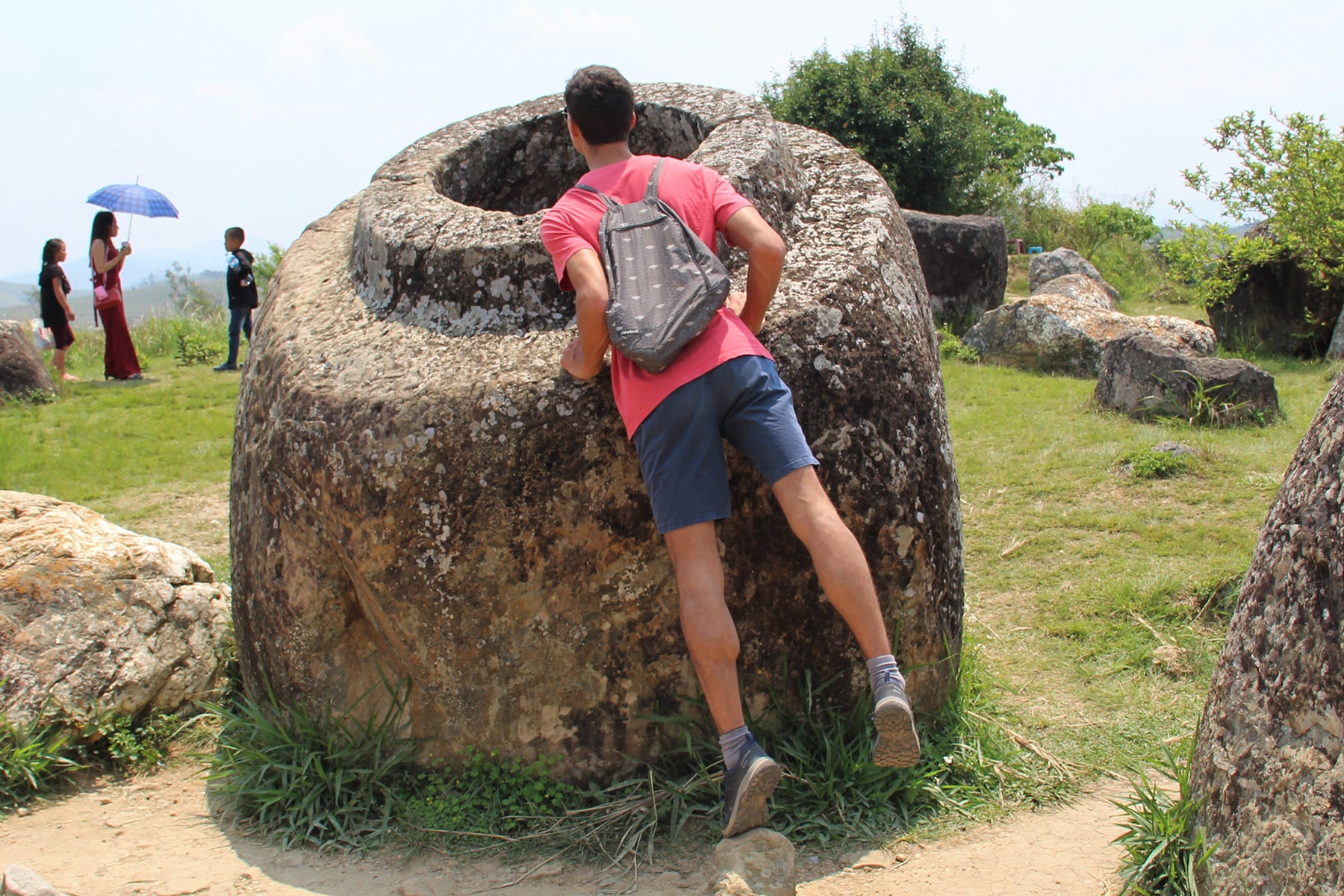

Phonsavan has been hardly hit by bombings; jar sites have been and are still undergoing bomb clearance. It is important to be able to read the MAG symbols on the paths that indicate whether a site has been demined in a superficial or in a deeper way. Visiting the jar sites is not dangerous; the whole area has been demined.
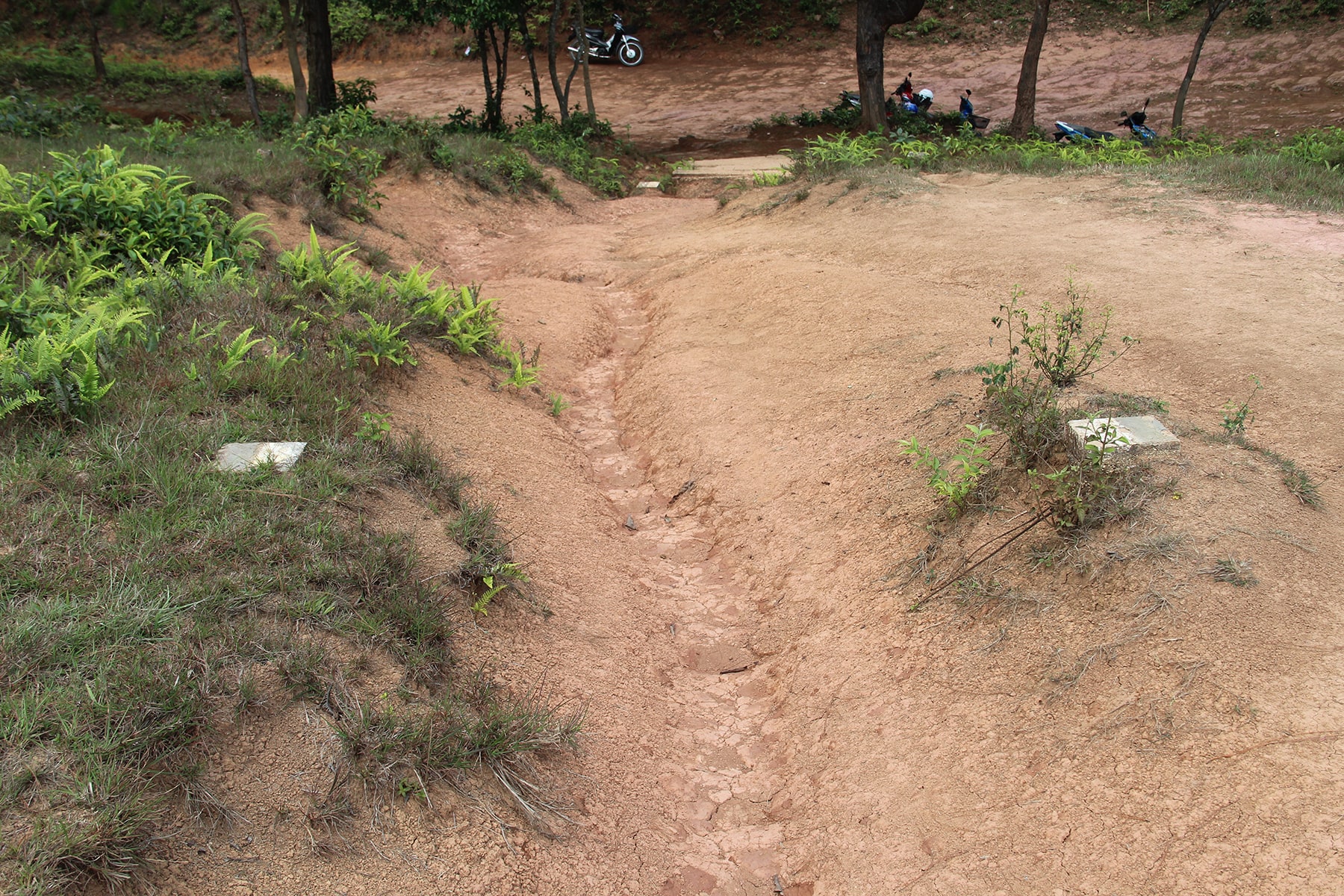
Parking scooter Jar Site 1: 3,000 kip (0.3€).
Price ticket Jar Site 1 Phonsavan: 15,000 kip (1.55€); Jar Site 1 visit duration: roughly 1:30 (including museum).
Price ticket Jar Site 2 Phonsavan: 10,000 kip (1.05€); Jar Site 2 visit duration: roughly half an hour.
Price ticket Jar Site 3 Phonsavan: 10,000 kip (1.05€); Jar Site 3 visit duration: roughly half an hour.
Day 11: Leaving for Thakek
We arrived in Thakek, departure point of a three-day scooter trip. People in Laos were celebrating during these days the new year, by starting drinking very early, singing karaoke, putting powder and lipsticks on their faces and soaking passer-bys, scooter, bikes and buses with buckets of water. These celebrations lasted until the end of our trip in Laos.
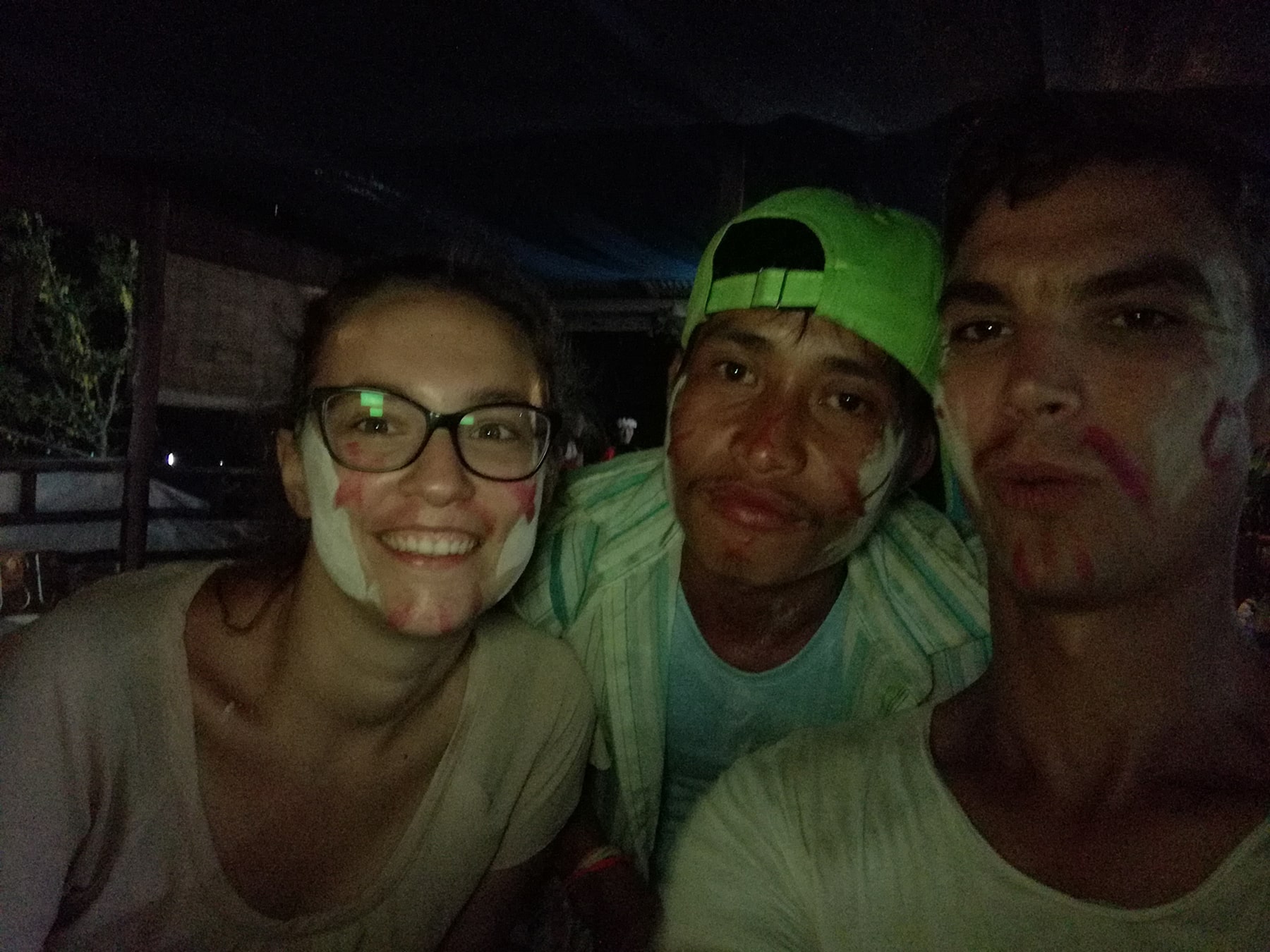
Days 12-15: Thakek Loop
As mentioned above, Thakek is the departure and arrival point of the so-called Thakek loop, a round trip of 3-4 days by scooter around the area. You can make many stops on the road to visit caves or natural pools. With our semi-automatic scooter and a little bag, we left for this new adventure. The paved road sometimes turned into gravel or dirt and there were some pretty big holes, so be careful!
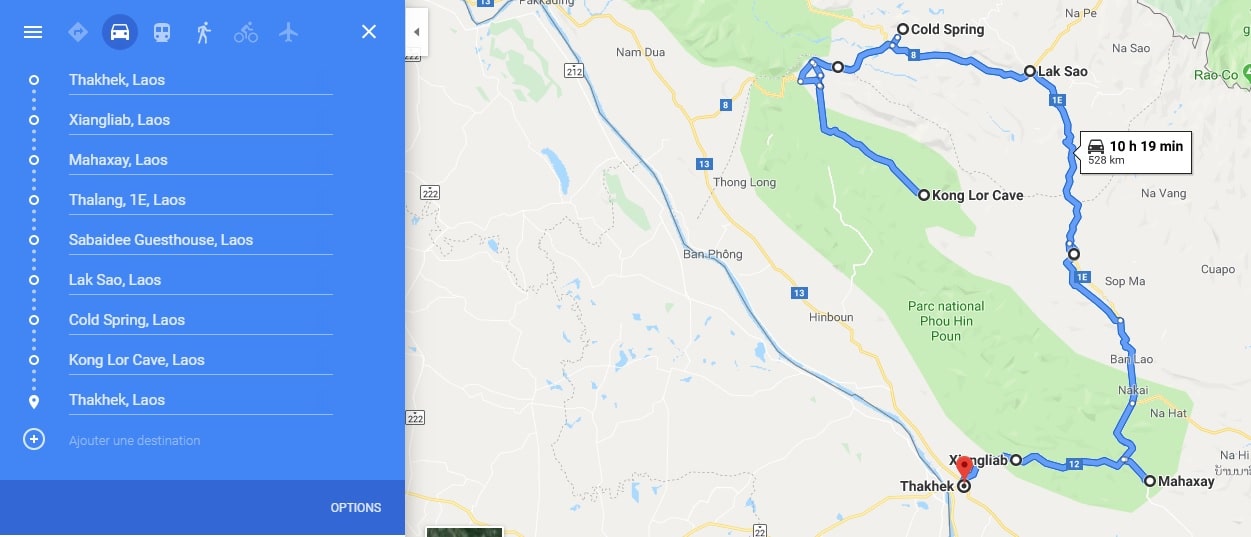
Thakek Loop - 1st Day
After 30 minutes, we reached our first stop: Xiangliab cave. After a 5-minute walk in a little forest, we arrived to the hidden entrance to this cave. The cave ground is covered in water and you can cross the cave by foot or swimming until you reach the other entrance on the other side of the mountain.
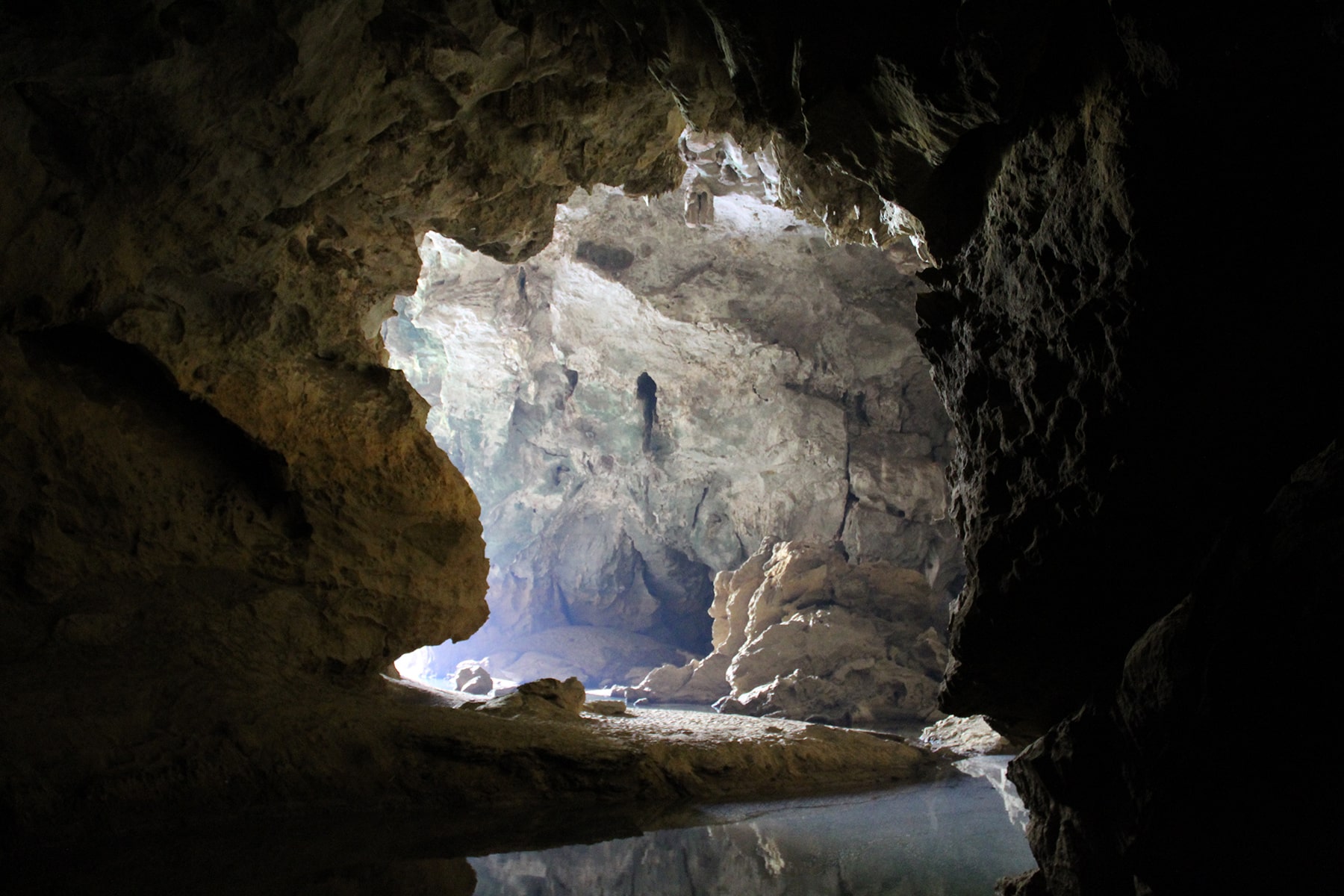
On the opposite side of the road, we stopped at the Tham Pha Inh cave, to which we accessed through a recently-build staircase. Once we got in, we saw on the left a suspended rock terrace with a little temple overlooking the cave that went down.

We ventured towards the bottom of the cave, walking on the rocks, and we reached the bottom, where a pool of transparent water perfectly reflected the cave grey rocks, forming a painting-like picture.
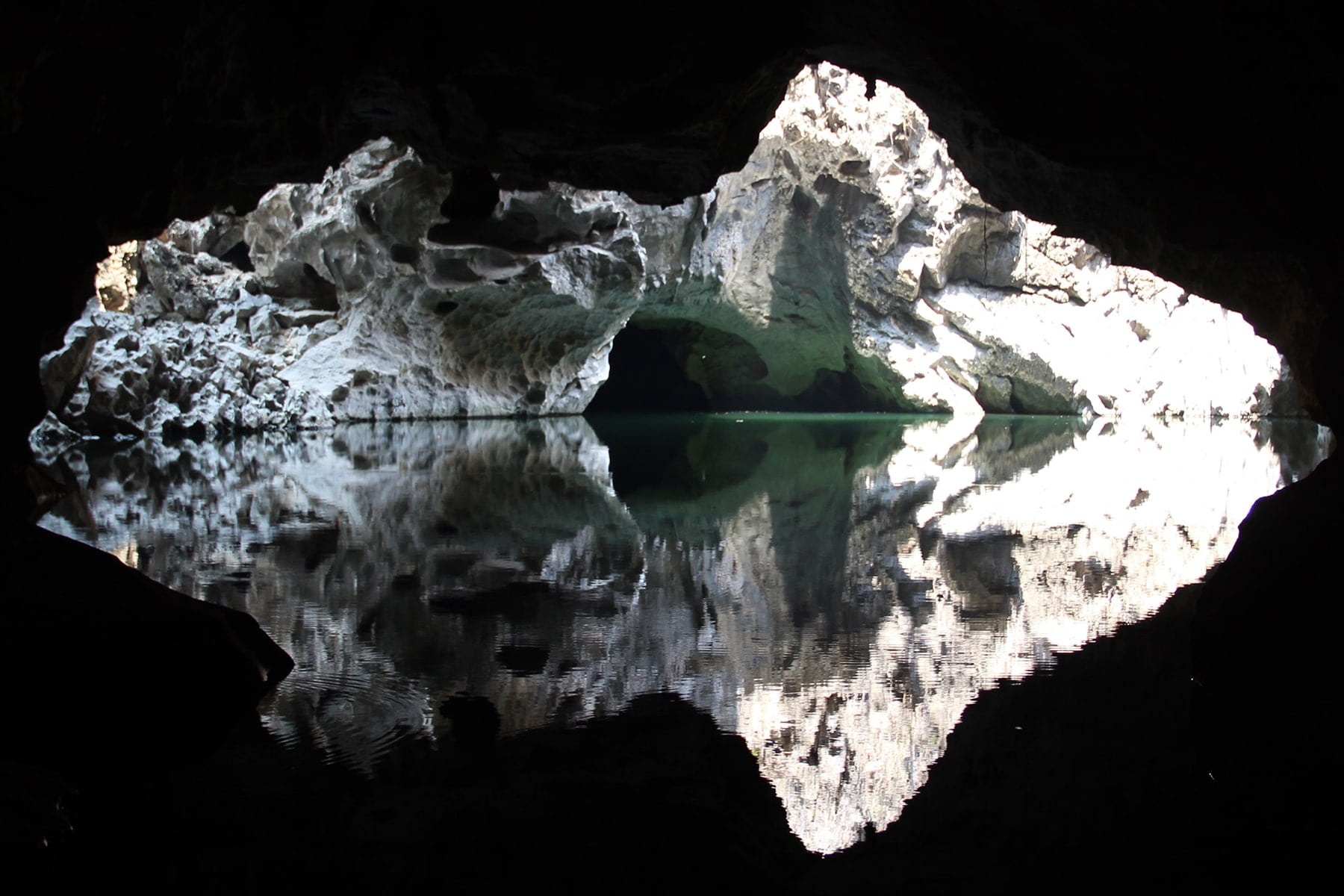
Our final destination for this first loop day was Thalang, where we were going to stay in the Sabaidee Guesthouse, favourite hotel of loop-goers. Before arriving to Thalang, we crossed several cities, where groups of young people soaked us with hosepipes or buckets of water to celebrate the new year. Watchword: “Saibadee Pimai”, happy new year! A bit before Thalang, we stumbled upon a rather strange landscape: many dead trees covered the riverbeds or valleys, creating a rather mysterious and gruesome scenario.

At the Sabaidee Guesthouse we settled in a nice wooden bungalow and celebrated the arrival of the new year with local people, singing karaoke very loudly and drinking watered-down beer.
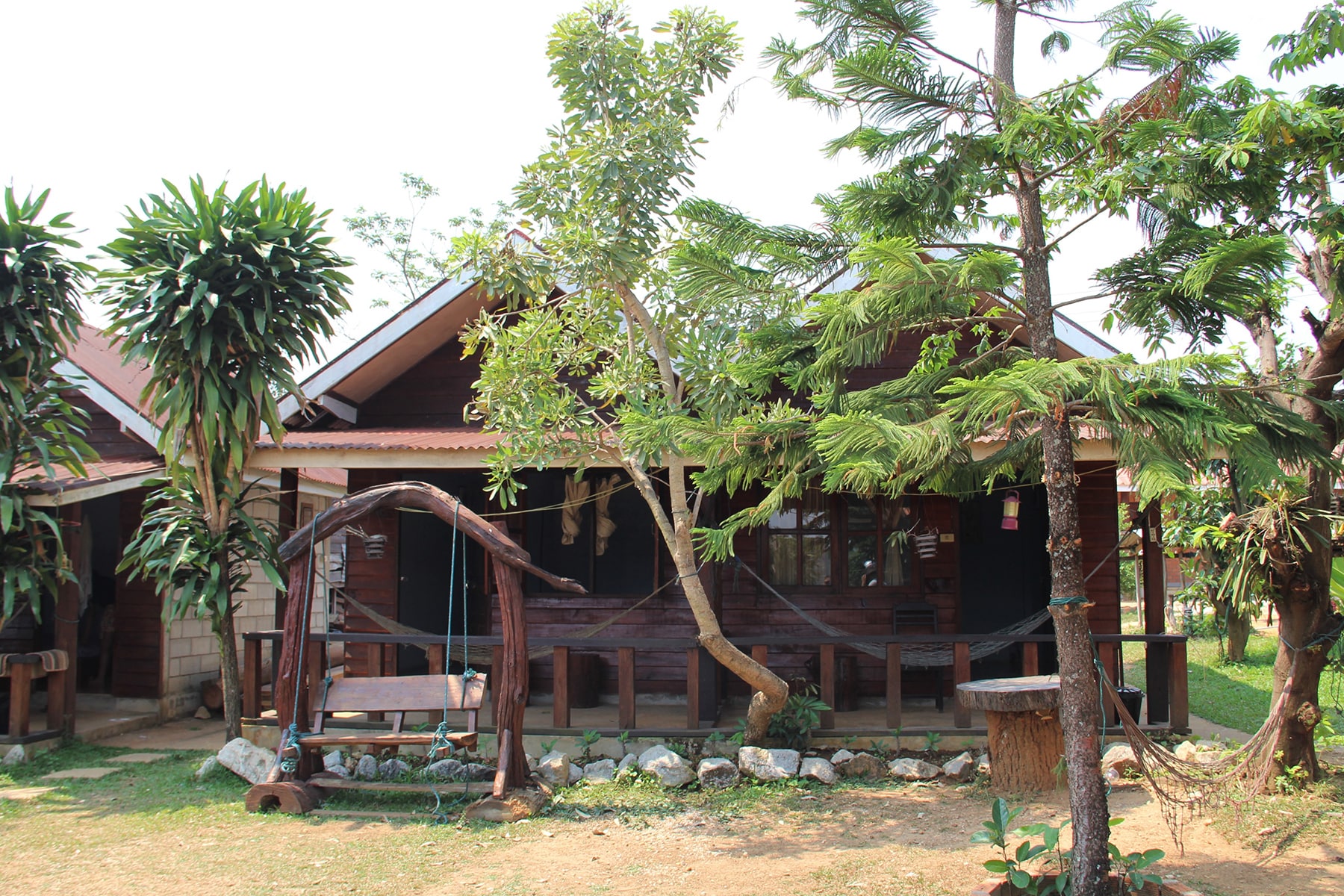
TOTAL KM 1st day: 122 km.
Thakek Loop - 2nd Day
On our second loop day, we wanted to go check out the cool springs, a natural pool where all Laotians go celebrate. Even though there were panels indicating the way, we got lost and ended up in a deserted and very picturesque field.
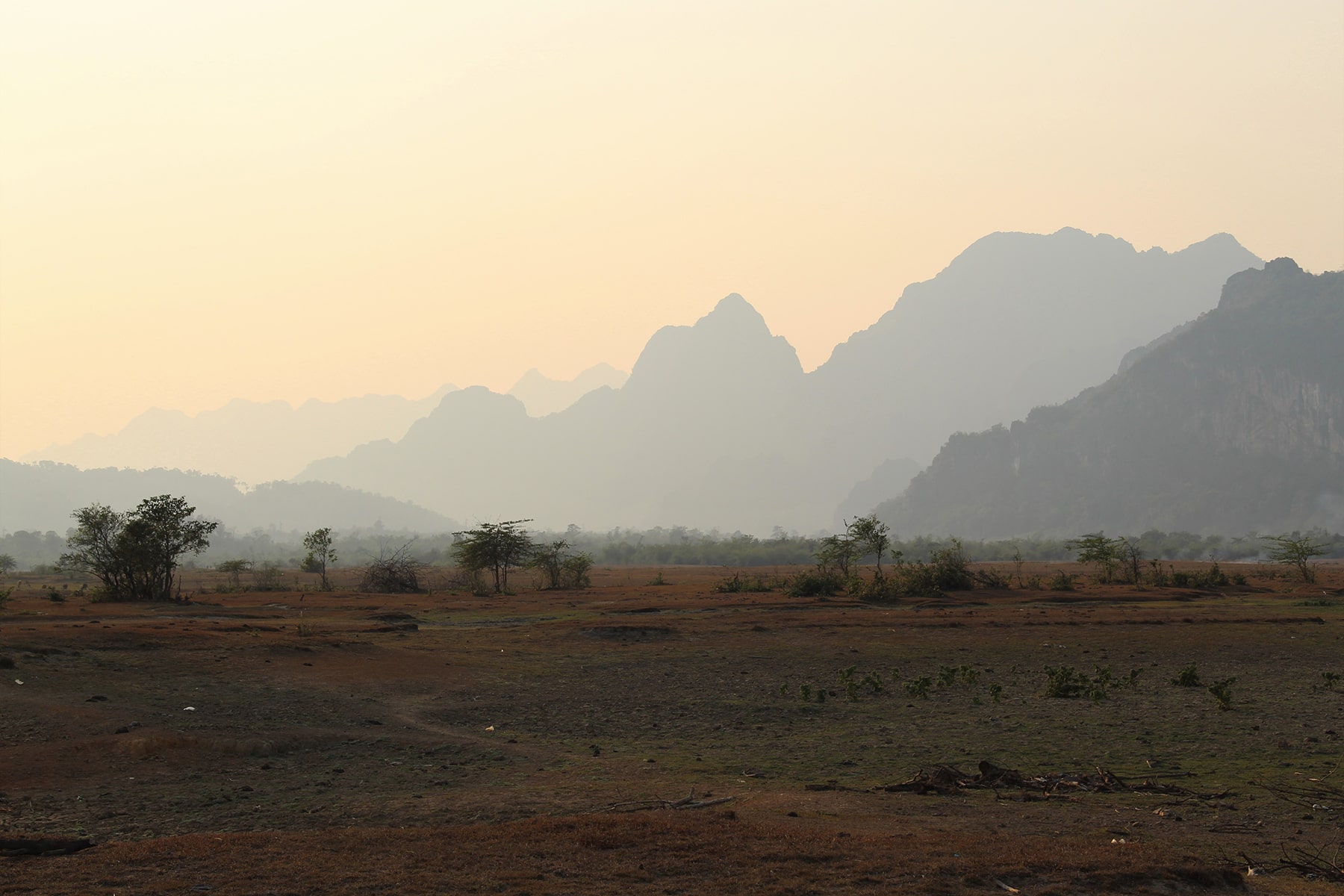
When we finally managed to get to the cool springs, we discovered that there were many local families celebrating the new year and we bathed all together in the natural pools. All Laotians swim in their clothes, so if you don’t feel comfortable wearing a swimsuit, you can easily dive in completely clothed. While children were swimming in the pool, adults were sitting down in the near-by forest drinking beerlao, the local beer, and eating what we think were quail eggs. Outside the park, on the parking lot, many food stands were selling all kinds of food, such as grilled fish and skewers.
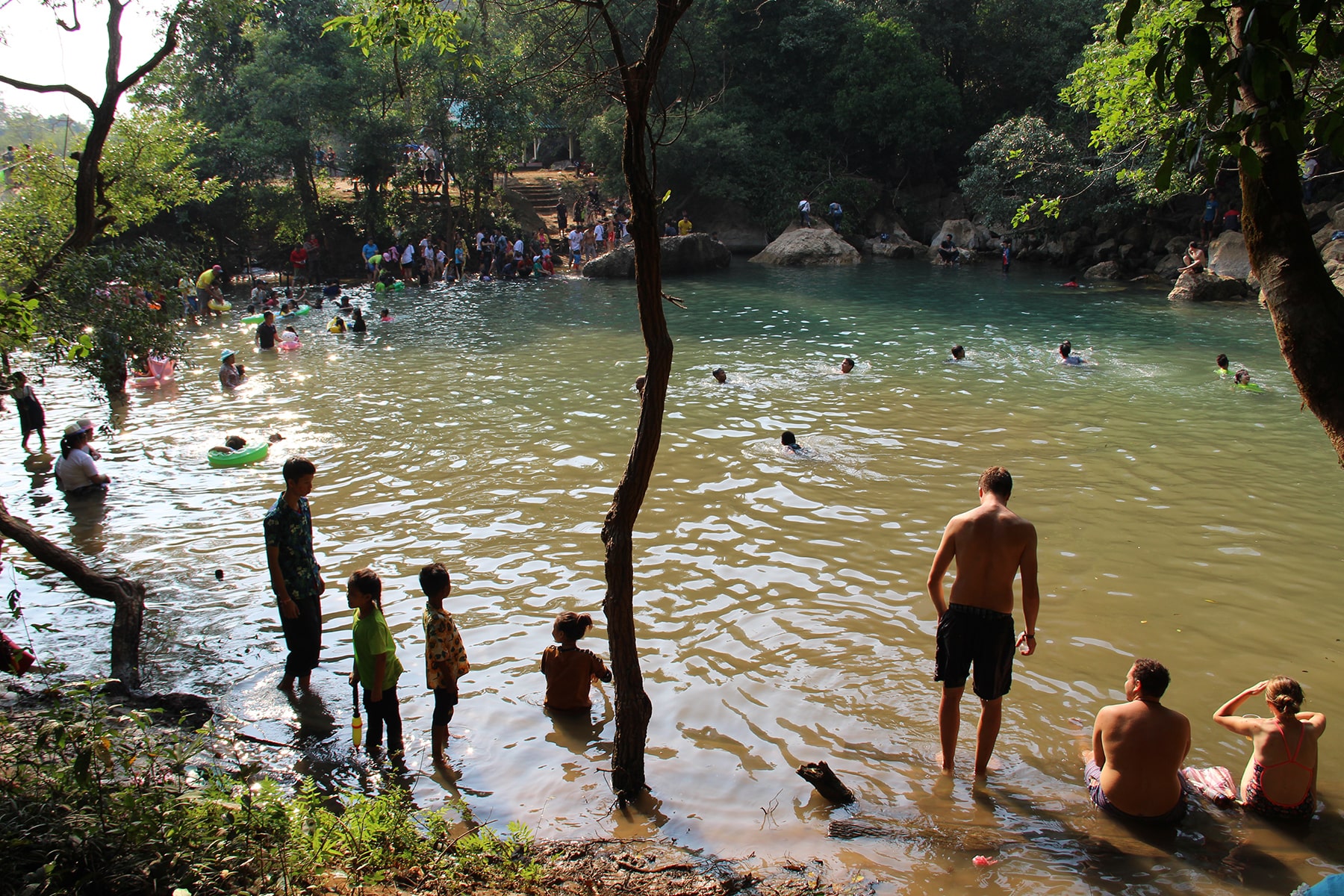
The road followed the curves of the mountains, giving magnificent views on the valley. In the evening we decided to go directly to Tham Kong Lor to be able to see the renowned cave early the following morning. Many kilometres awaited us until the village and we had to endure a persistent sore bum, a lot of dust on our face and many animals crossing the street at the last second. In the last 30 kilometres, when the sun was setting down on a beautiful and rather wobbly wooden bridge, we passed by picturesque villages with stilted houses and we observed the daily life of local people, preparing for the night, with the astonishing view of the mountains in the backdrop.
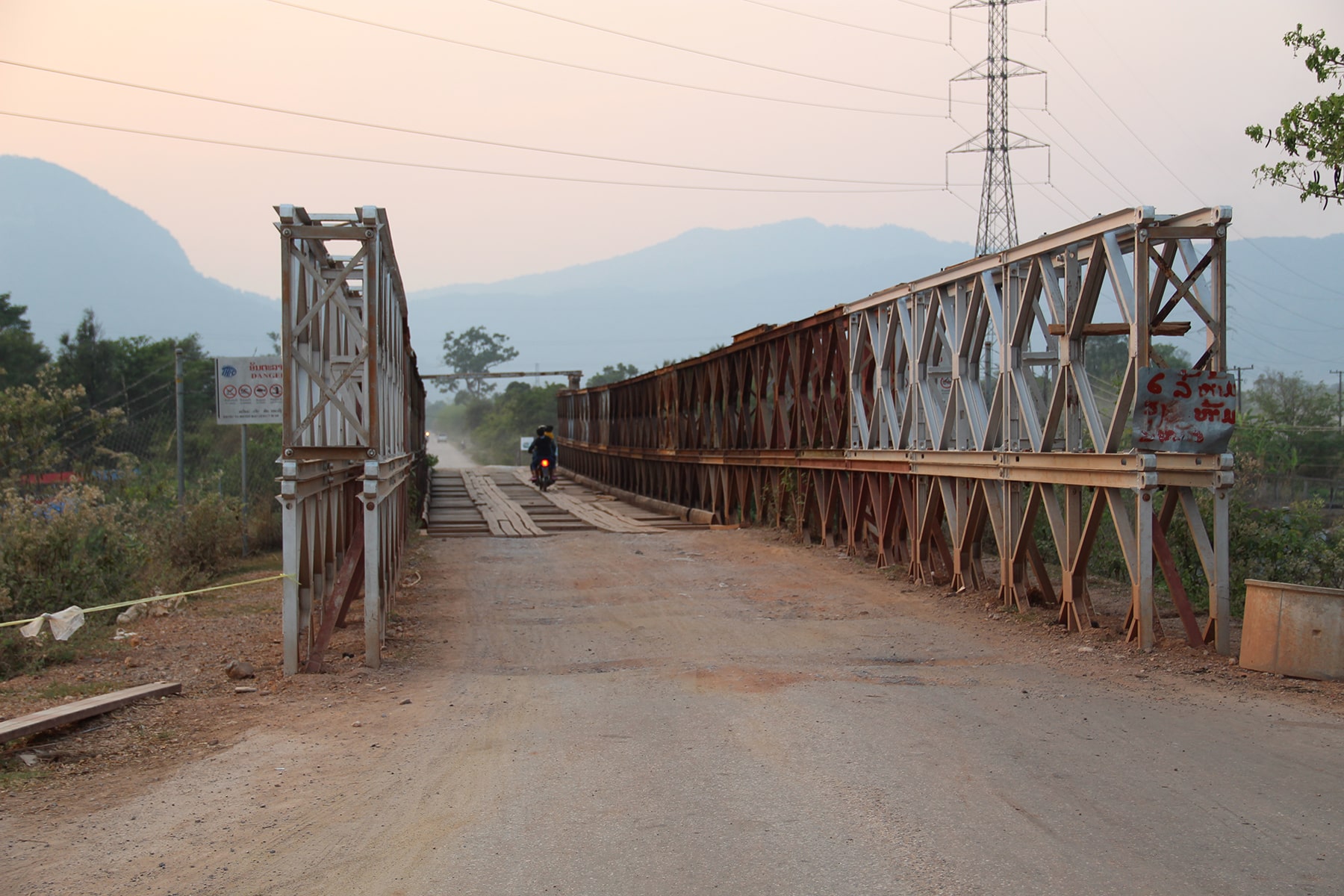
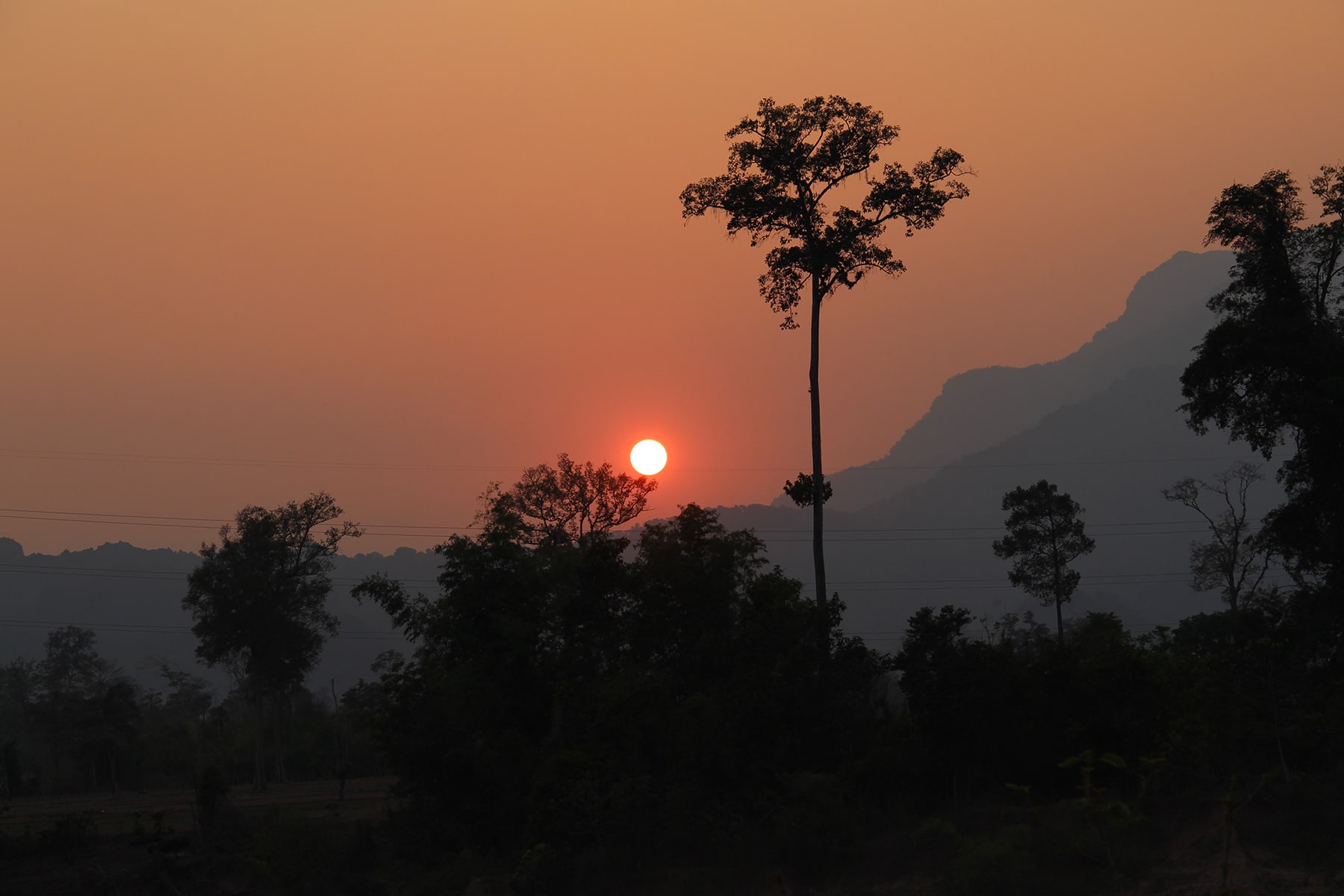
TOTAL KM 2nd DAY: 153 km.
Thakek Loop - 3rd Day
Tham Kong Lor Caves
Early in the morning, at around 5.30 am a huge storm hit the Tham Kong Lor area. We had read that the visit by boat in Tham Kong Lor, a cave crossed by a river stretching along 7.5 km under a big limestone mountain, depended on the water level: if the water was too low or too high, the visit could have been cancelled. So we went to the entrance at around 7.50 am (the park opens at 8), to see if the cave was open and to avoid the crowds. Perhaps because of the grey weather or maybe just out of luck, we were the first visitors of the day and we spent more than half of the visit in the cave completely alone. At the ticket office they lent us against deposit head lamps, flip flops and life jackets and we went towards the cave entrance, where we embarked on a blue boat.
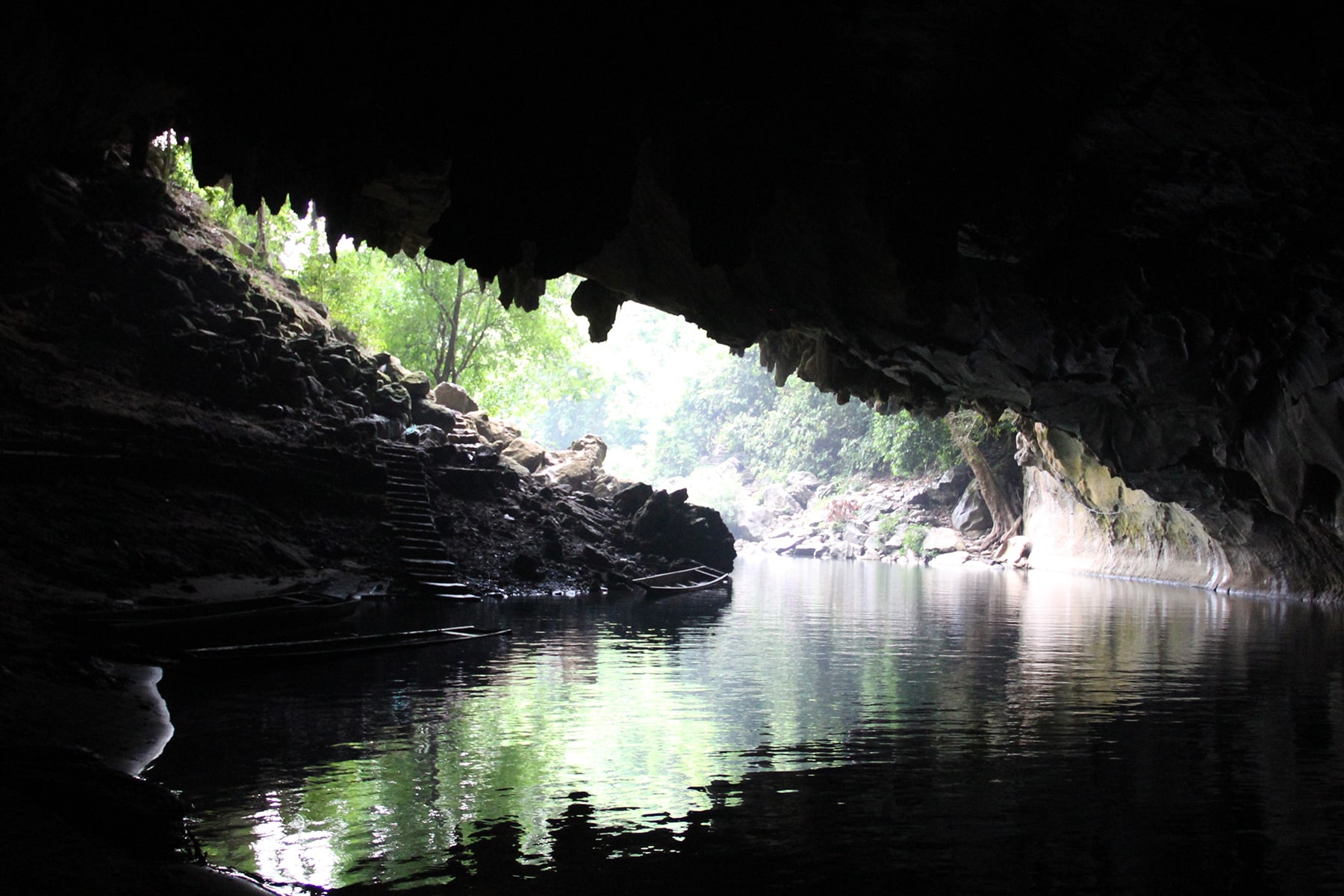
During the visit we crossed the cave by boat, completely in the dark, only illuminated by the beam of our light torches. A monastic silence was broken only by the sound of the motor pushing the boat through the cave; we went through areas that were 10m high to areas only one meter high to the so-called cathedral, a majestic tunnel that was roughly 50m high. Everywhere around us we saw stalactites, stalagmites, rocks and hollows where we thought somebody was going to come out one moment or another. At one point during the visit, we got off the boat to follow a path by foot that has been installed around huge colourful rock spikes which are normally lighted up, but when we were there, we were completely in the dark and we explored with our torches. Once we had gotten back on the boat, we went out through the back door of the cave and stopped in a near-by village plunged in vegetation; we then went back on the same route. On the way back we crossed a couple of other boats that were starting the visit, but the site was definitely not crowded at that moment. We were very lucky to be able to visit the caves alone in an absolutely magical atmosphere.
Since it was the last day of the loop, we had to drive back to Thakek on a very busy road that buses also take. Since we weren’t too sure about driving on that road (we had seen how bus drivers can be a little crazy), we decided to go back on the same road, sleep one more night at the Sabaidee Guesthouse and reach Thakek the following day. So we were able to drive on the beautiful mountain roads again, to see the little village bathing in the morning light and the arid planes. Although it was cold after the rain had poured down, local people still insisted on soaking us to celebrate the new year but, whereas before we stopped willingly to fight the sweltering heat, now we tried to avoid them at all cost to not catch a cold.
TOTAL KM 3rd DAY: 149 km.
Thakek Loop - 4th Day
We went back to Thakek, where we gave back the scooter, happy to finally rest our bums that were definitely suffering after 4 days of scooter non-stop.
TOTAL KM 4th DAY: 107 km.
TOTAL KM THAKEK LOOP: 531 km.
At around midday we took a very crowded bus to Pakse.
Price gas Loop Thakek: 95,000 kips (9.75€).
Price ticket entry Cool Springs Thakek: 4,500 kips (0.45€) + 2,000 kips (0.2€) parking.
Price ticket entry Tham Kong Lor caves: 65,000 kips (6.7€); Tham Kong Lor caves visit duration: roughly 1:30.
Price ticket bus Thakek-Pakse: 60,000 kips (6.17€); journey time Thakek-Pakse: 7 hours.
Tuk-tuk bus stop-Pakse city centre: 20,000 kip (2.05€).
Days 16-19: Don Det and Si Phan Don (4,000 islands)
We abandoned the idea of visiting the archaeological site of Wat Phu, because in order to get there, we had to take a bus, a tuk-tuk and a boat. With the help of a Belgian boy owner of the Miss Noy agency, we got the bus and boat tickets to the island of Don Det, the most famous island of the 4,000 islands, also called Si Phan Don in Laos. The Si Phan Don are islands of different dimensions, including grass bushes, on the part of the Mekong river flowing in Laos. Don Det and its twin sister Don Khon are the most visited islands.
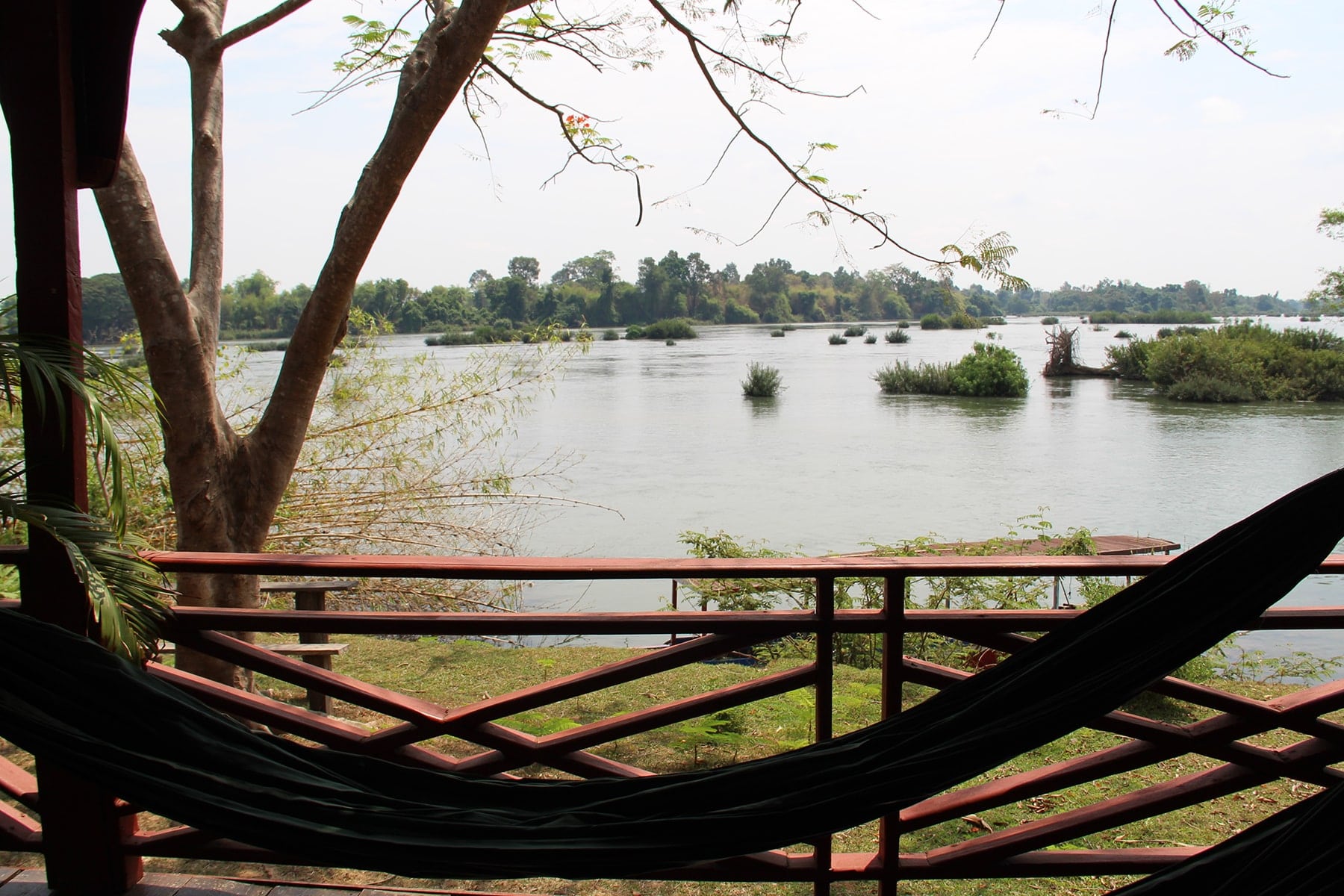
Life is easy in Don Det, a tiny island with many nice hotels and restaurants and a thousand hammocks with view on the 4,000 islands. The “city centre” is slightly more crowded, but peace and quiet reign on the rest of the island. We rented a bike with broken brakes to reach Don Khong island, passing through dusty paths and paddy fields, waiting desperately for the rain season.
Tat Somphamit Falls
The Tat Somphamit rapids violently fall down and come crashing against rocks, until they regain their calm at the bottom when they reach the main course of the river. The park has many viewing points, from which you can observe the rapids, a pool with some zip line and hammocks and also a tiny beach.
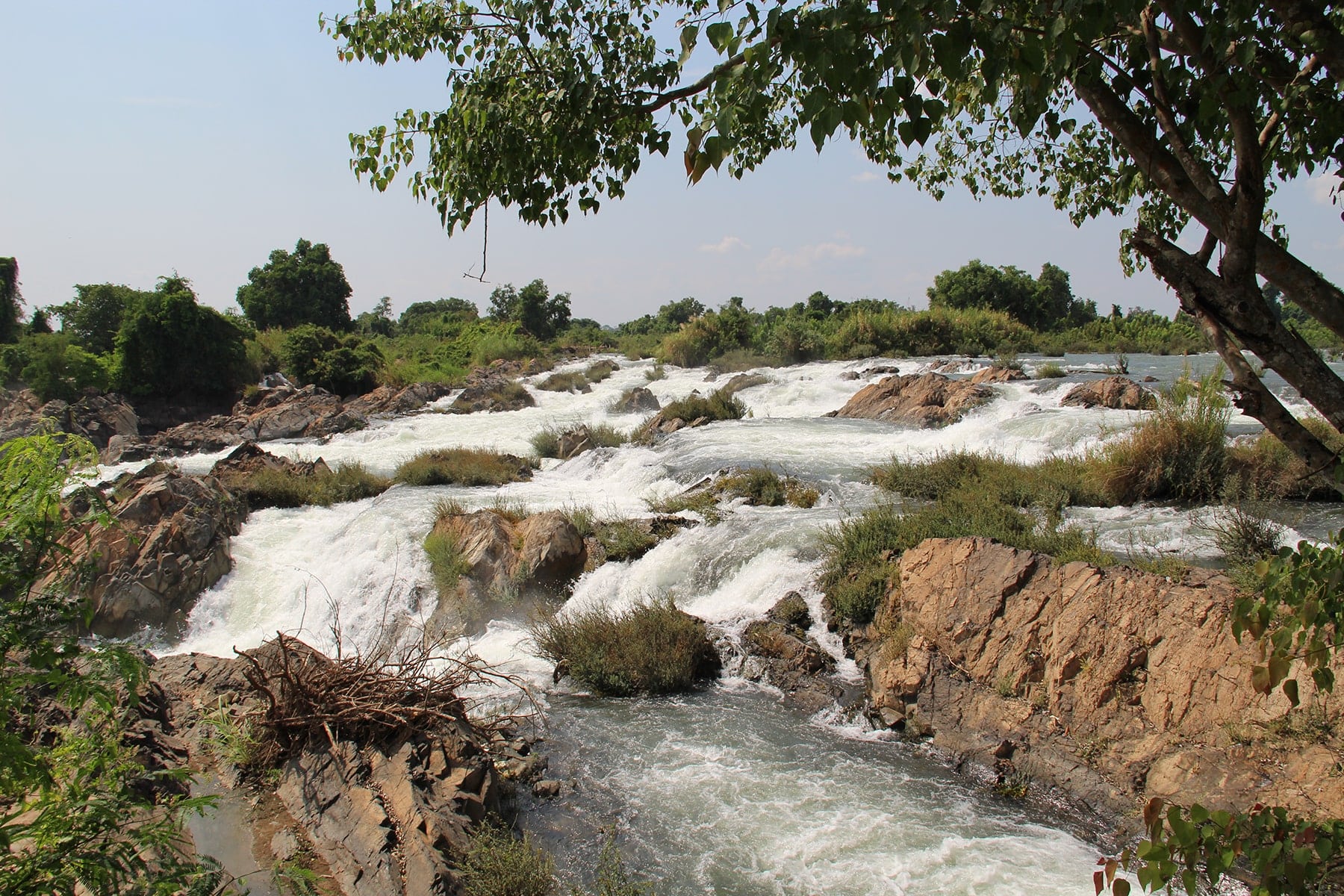
We ended our day in one of the little beaches on the river in Don Det, where we swam in the sunset light.
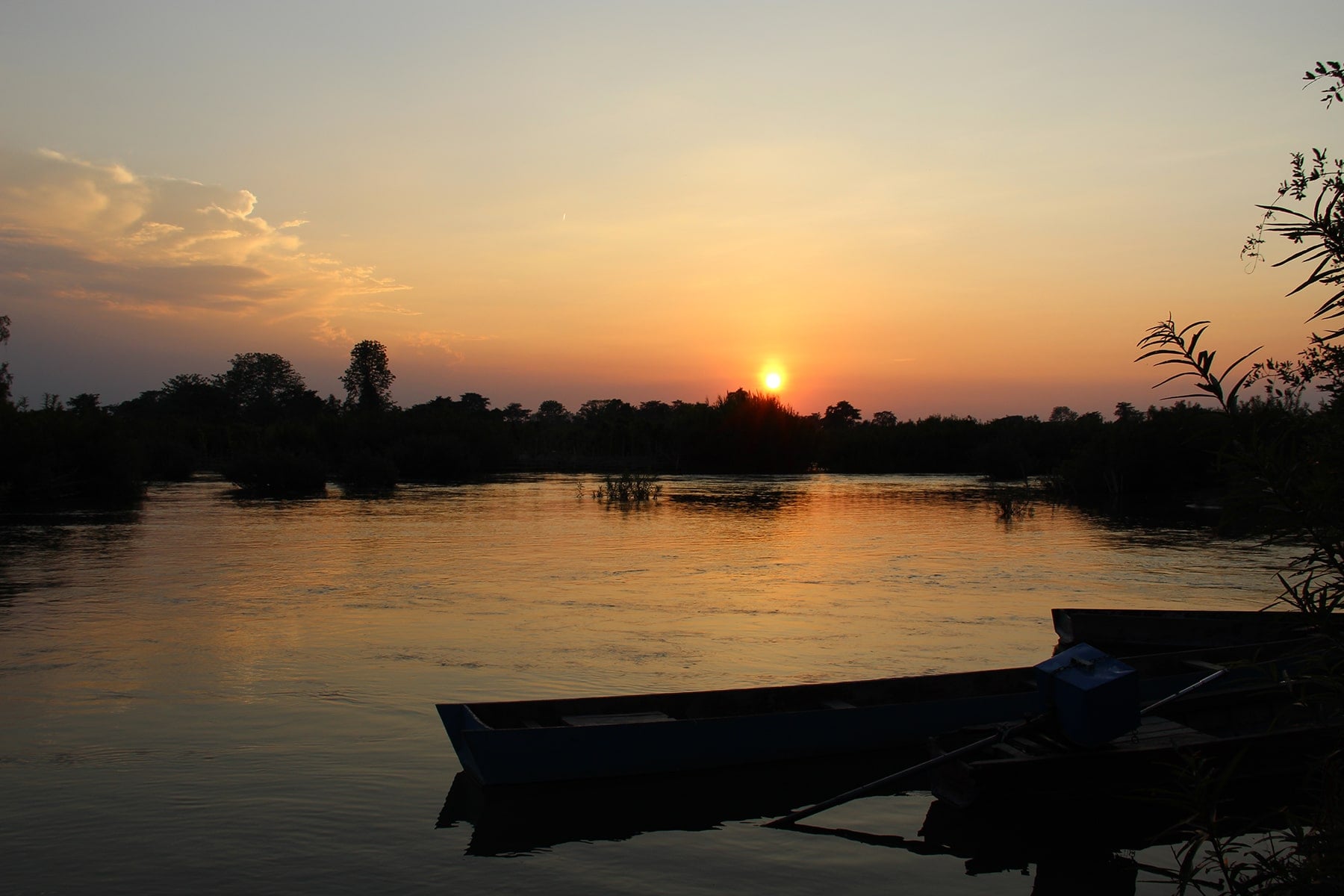
Khong Pa Soi Falls
The following day, we went back to Don Khong by bike, taking a path along the river with beautiful palm trees. The path became very pebbly and we had to carry the bikes until the rapids entrance, next to a restaurant. The Khong Pa Soi rapids are smaller than Tat Somphamit, but there is a beautiful suspension bridge from which you can enjoy a nice view on the river. Inside the park a couple of paths bring you closer to the water.
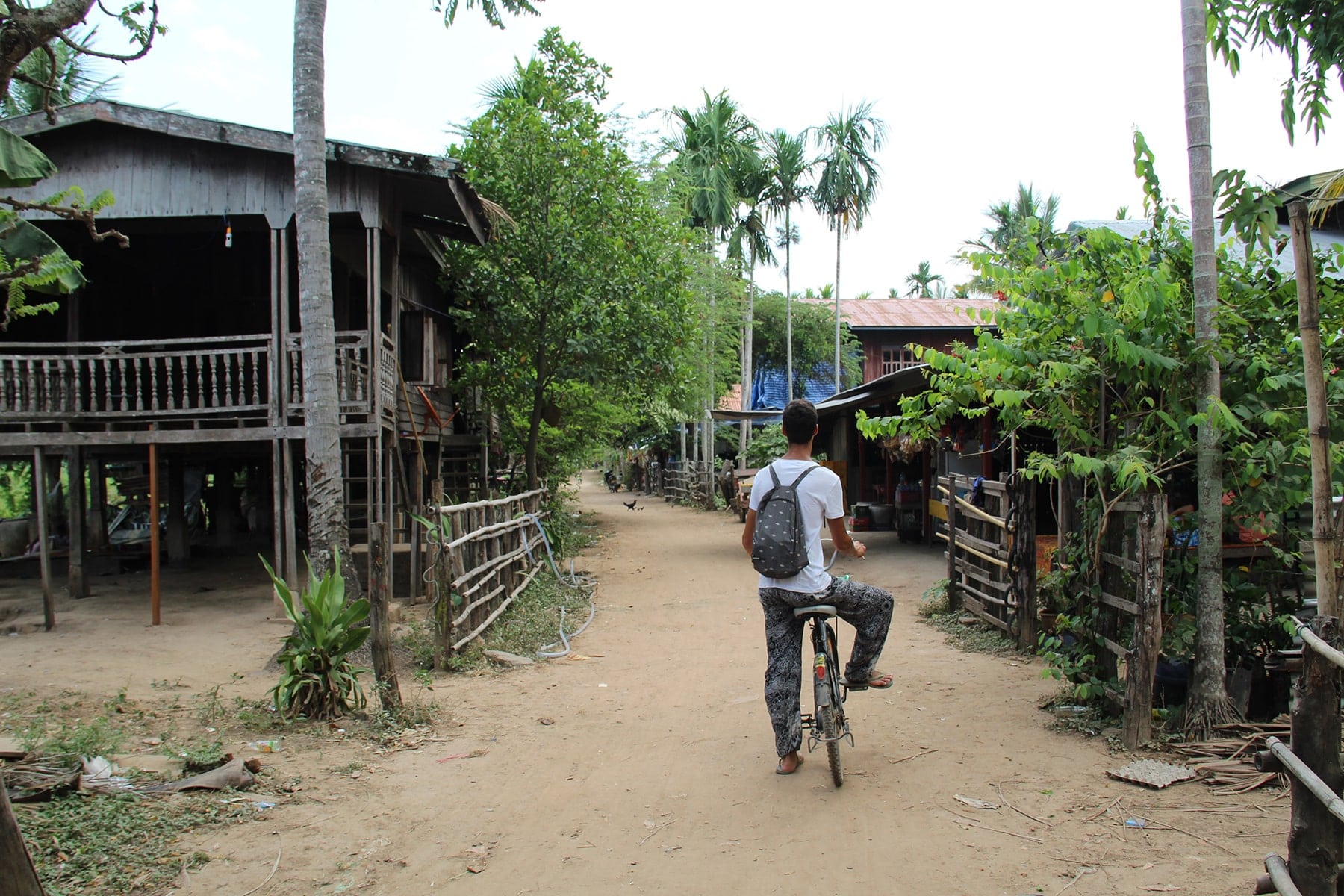
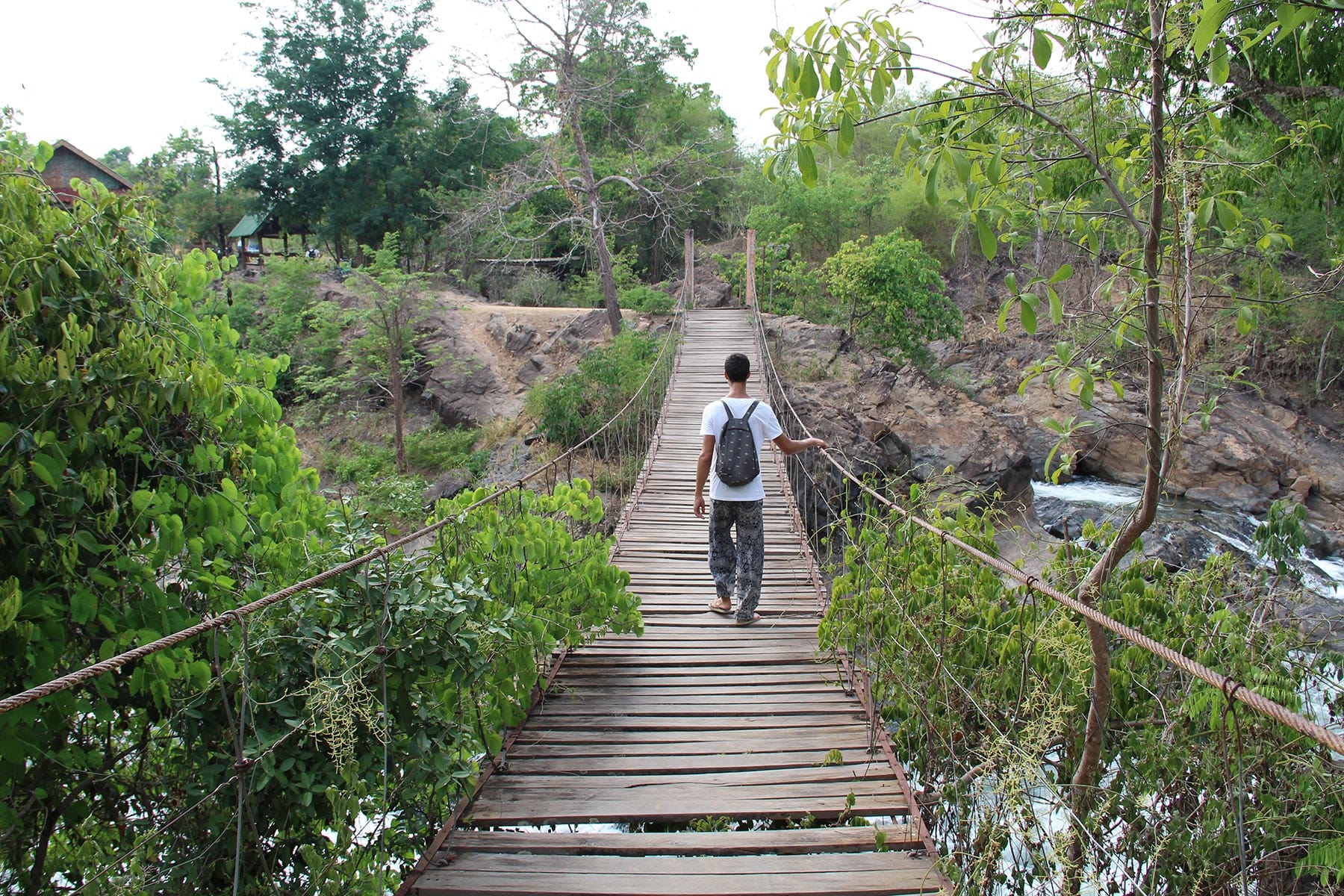
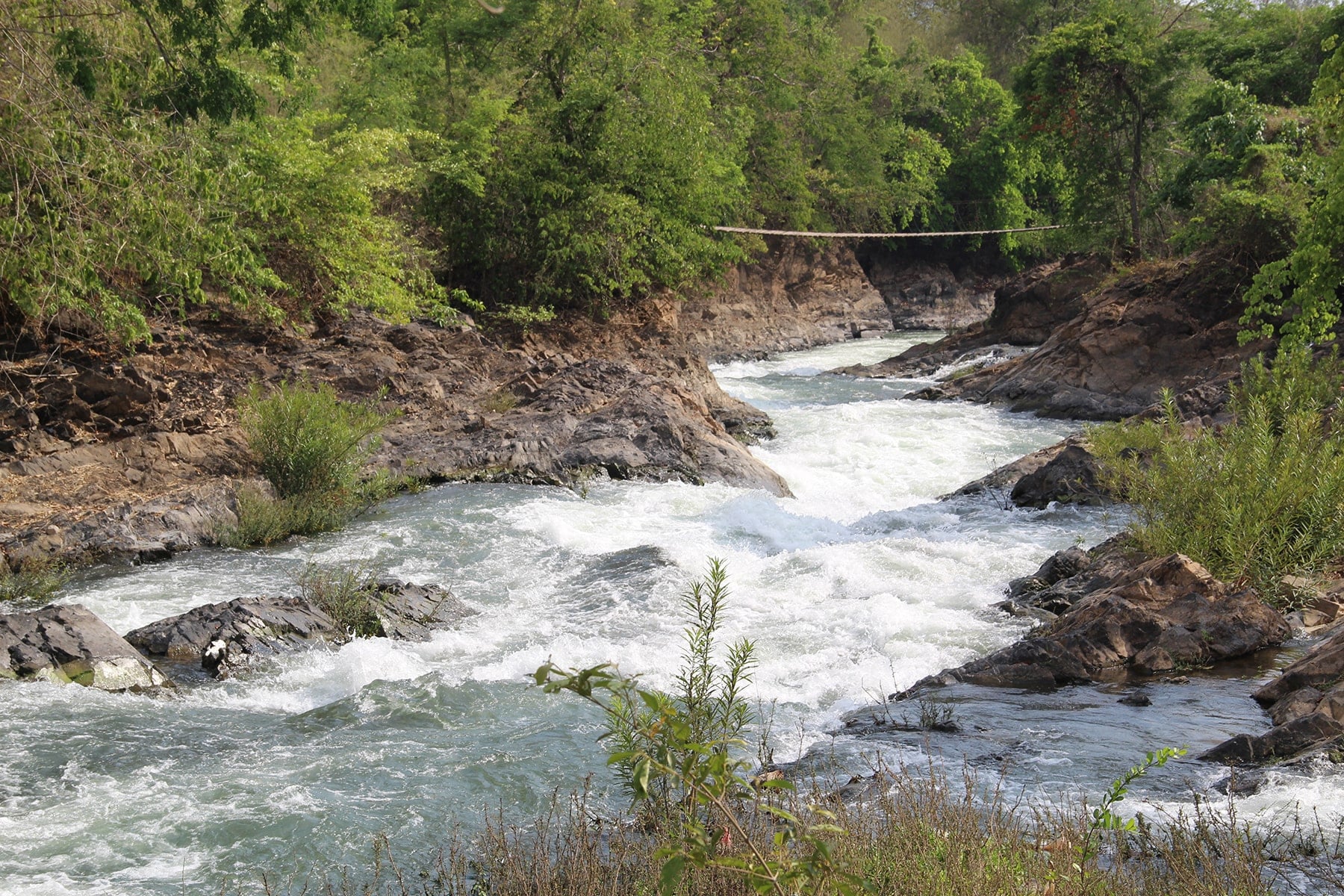
Price to rent bike in Don Det: 2,000 kips (0.20€)/day.
Ticket price Tat Somphamit falls: 35,000 kips (3.6€); Tat Somphamit falls visit duration: roughly 4 hours.
Ticket price Khon Pa Soi falls: FREE; Khon Pa Soi falls visit duration: roughly 2 hours.
Day 20: Leaving for Cambodia
We spent hours trying to figure out the best way to cross the border with Cambodia without spending too much money. We wanted to avoid taking buses with the agencies in Don Det, because we knew that prices were higher. In the end we decided to take a local bus to the border and once in Cambodia, take a bus to Kratie. So according to what we had planned, we took the boat to the mainland and, although we were starting to embark water very quickly, we safely made it to the bus station in Nakasong. The ticket price of the local bus that we wanted to take had spiked compared to what we had seen online (8 times the price); no tuk-tuk wanted to bring us to the border, because they had agreed with the bus station. In the end a local brought us with his car, obviously in return for payment. At the end of the day, we saved some money but the price difference with the organized trips wasn’t that big and it could have saved us some stress. This border passage was a bit chaotic and confused, but we managed to get to Cambodia!
Goodbye Laos!
Tops and flops of Laos
| Top Laos | Flop Laos |
|---|---|
| Home stay in the village next to Nong Khiaw and trekking in the waterfalls | Laotians have sadly not been educated about plastic use and how to dispose of it, yet. |
| Thakek Loop | Some forest areas were burning to make space for agriculture.* |
| Kuang Si Waterfalls, Luang Prabang | Tourists do not respect the monk alms ritual in Luang Prabang |
| Country and people authenticity | |
| The passion of Laotians for karaoke |
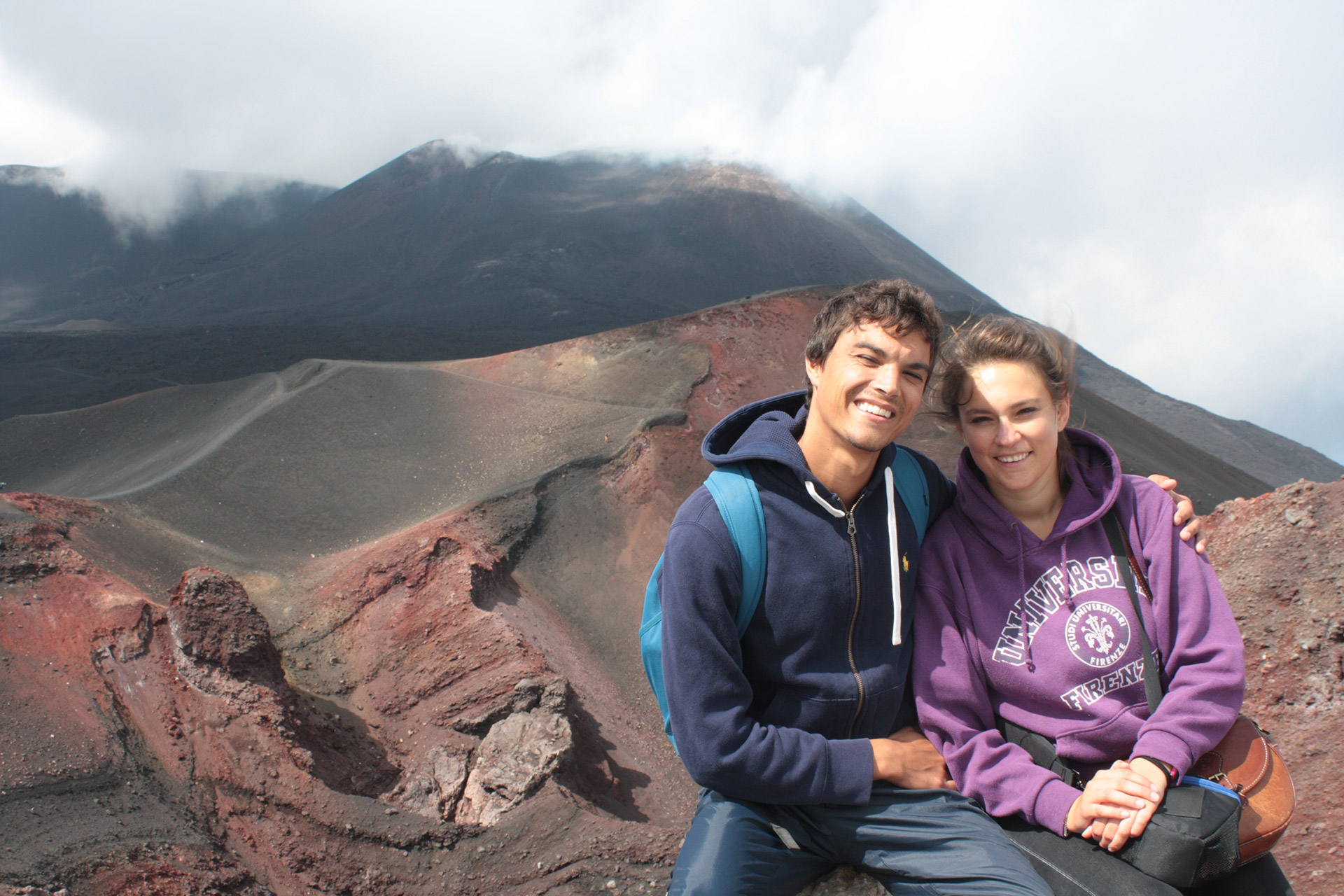
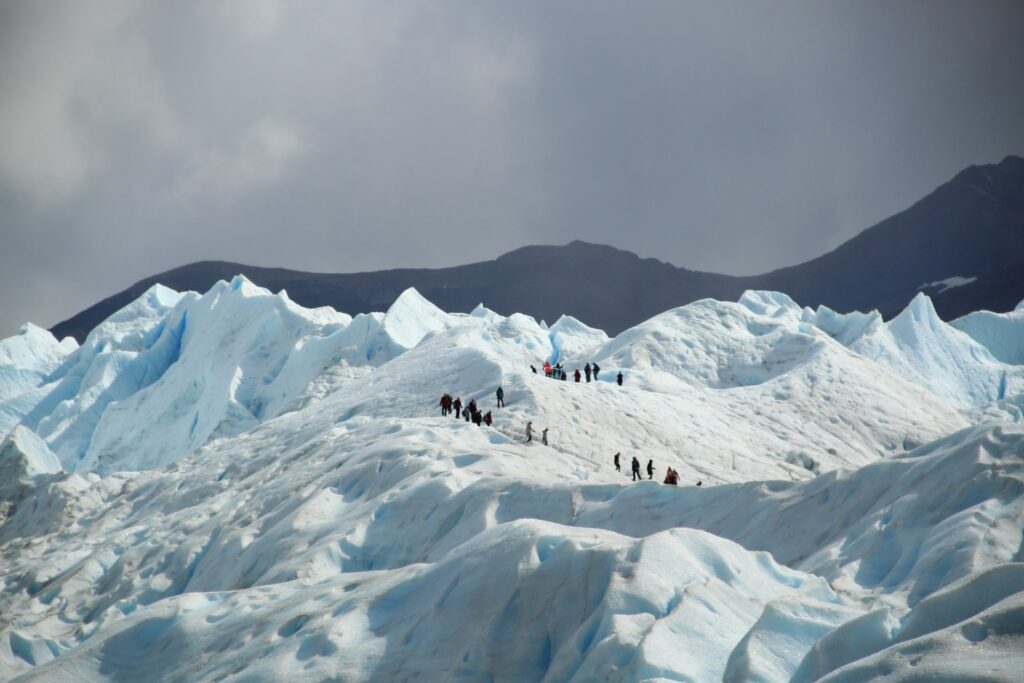
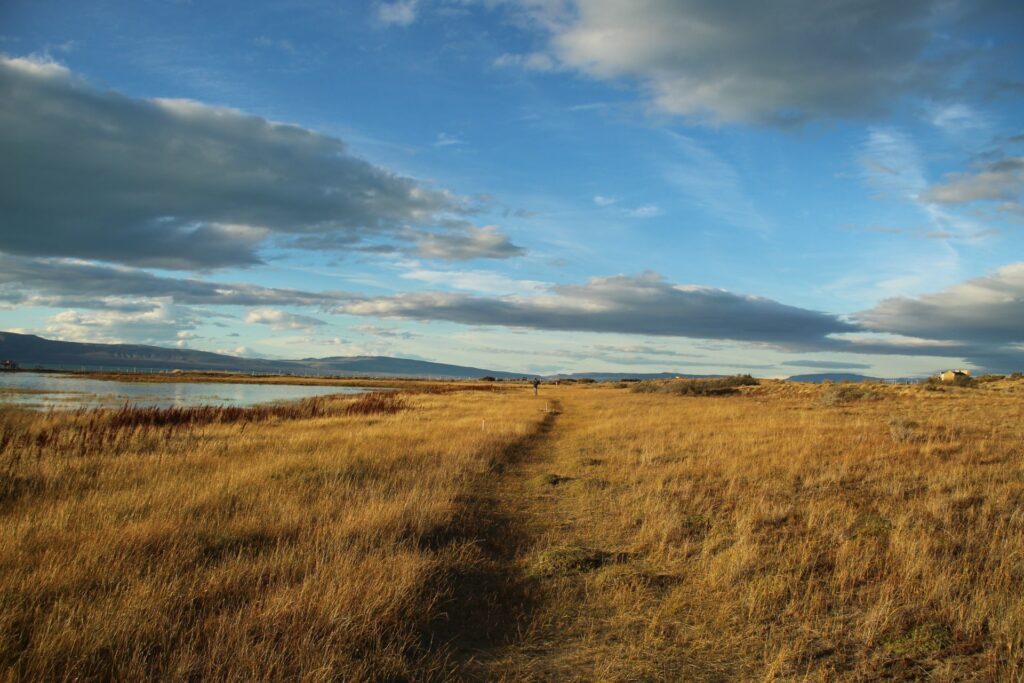
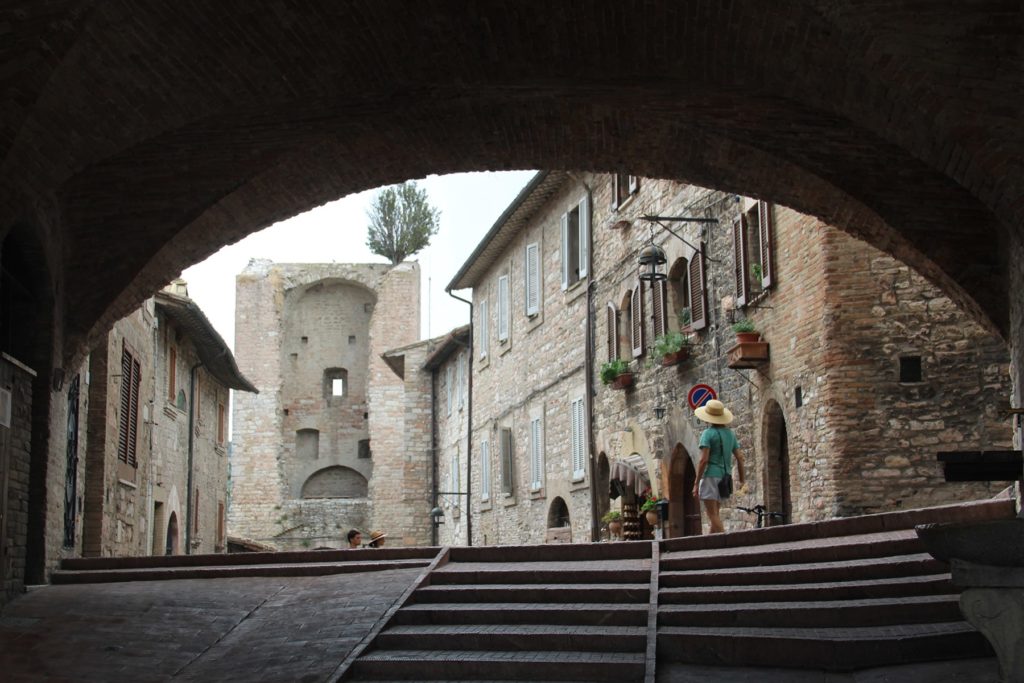
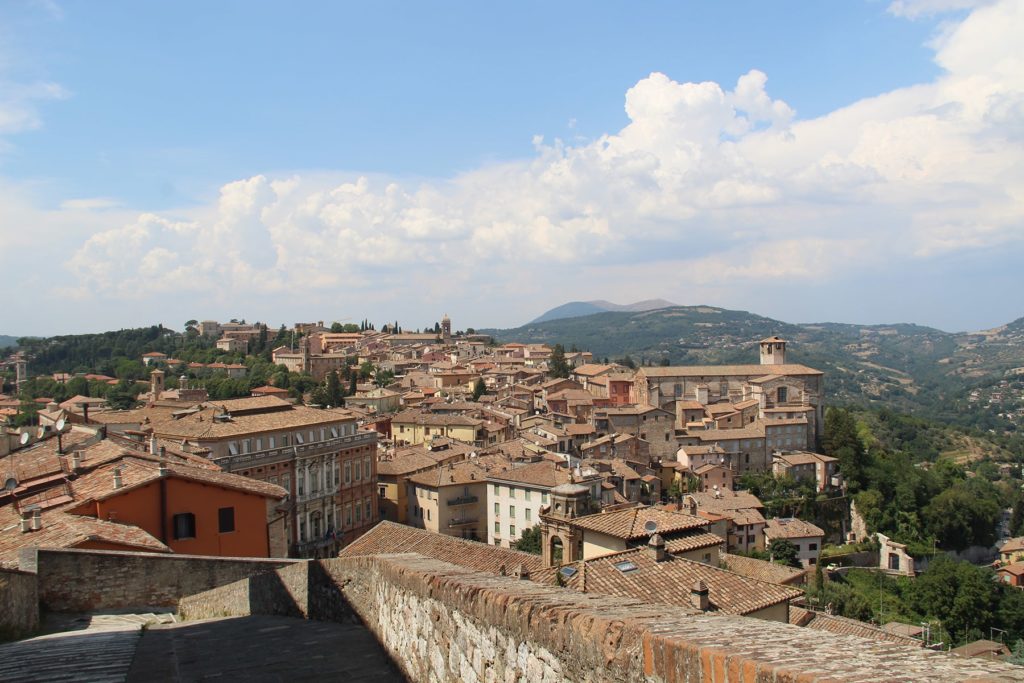
Bonjour! I was searching Laos Itinerary and I come across your blog. the information here was good and thank you for sharing it in your blog. Merci pour ton information. If you do ever visit Malaysia. Don’t hesitate to contact me .I can recommend places for you to go and travel. Au revoir .Ciao
Hello, thanks a lot for your comment and for offering your tips for Malaysia, maybe one day! 🙂